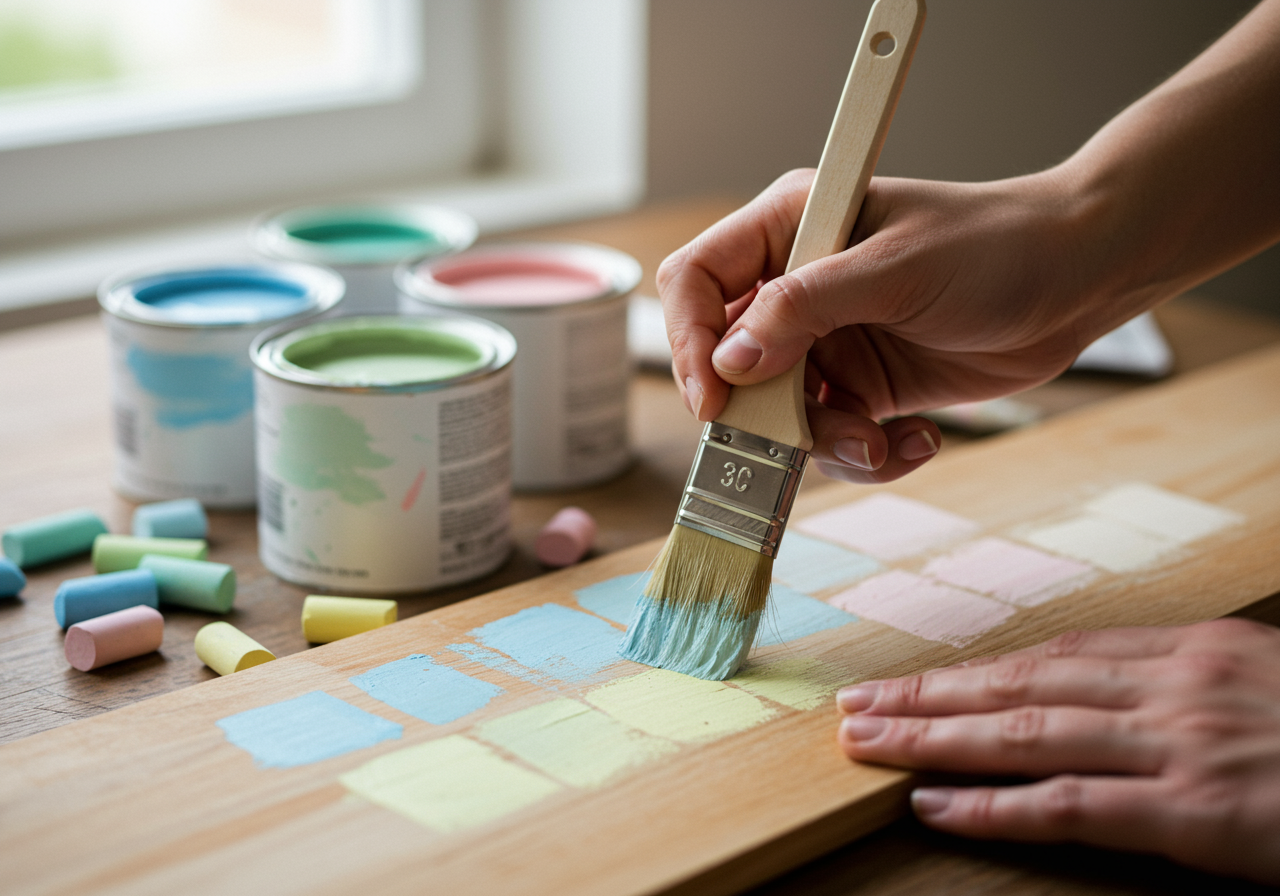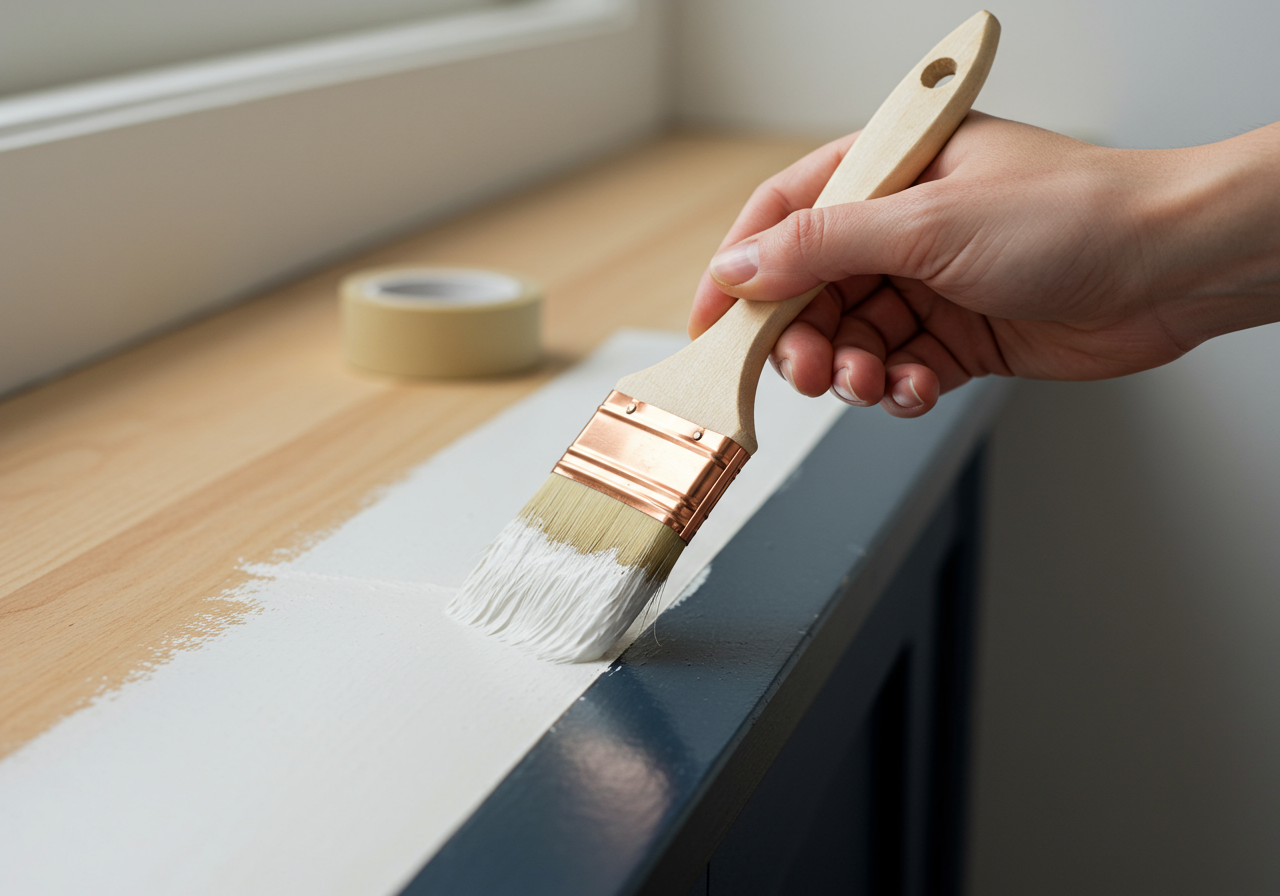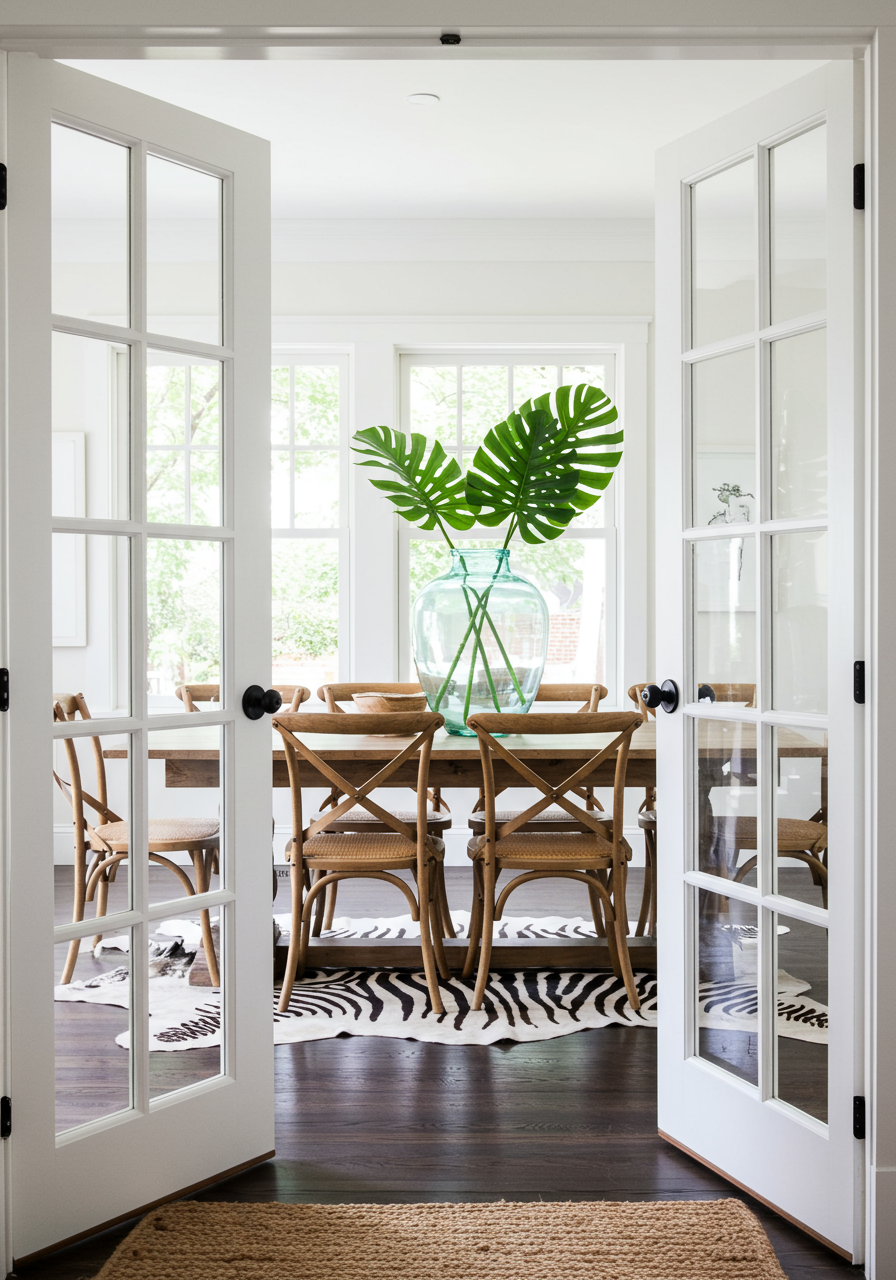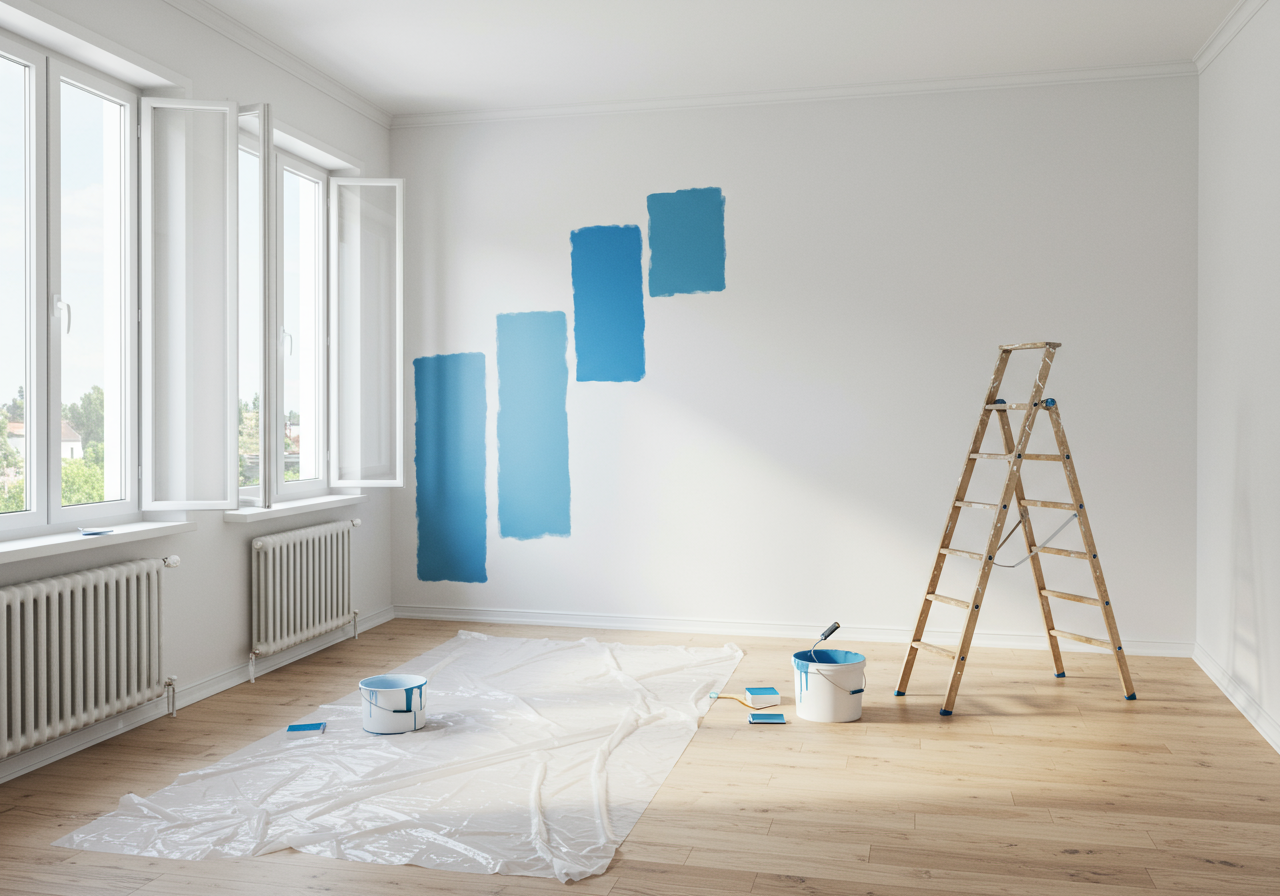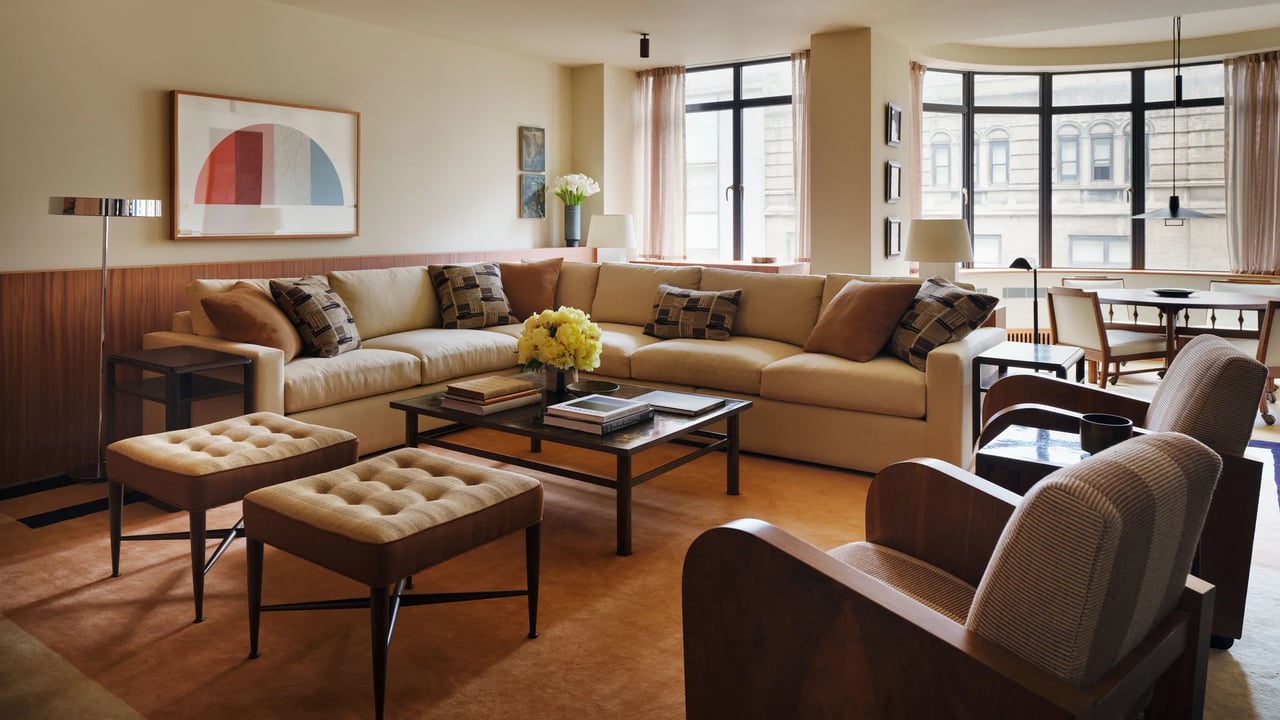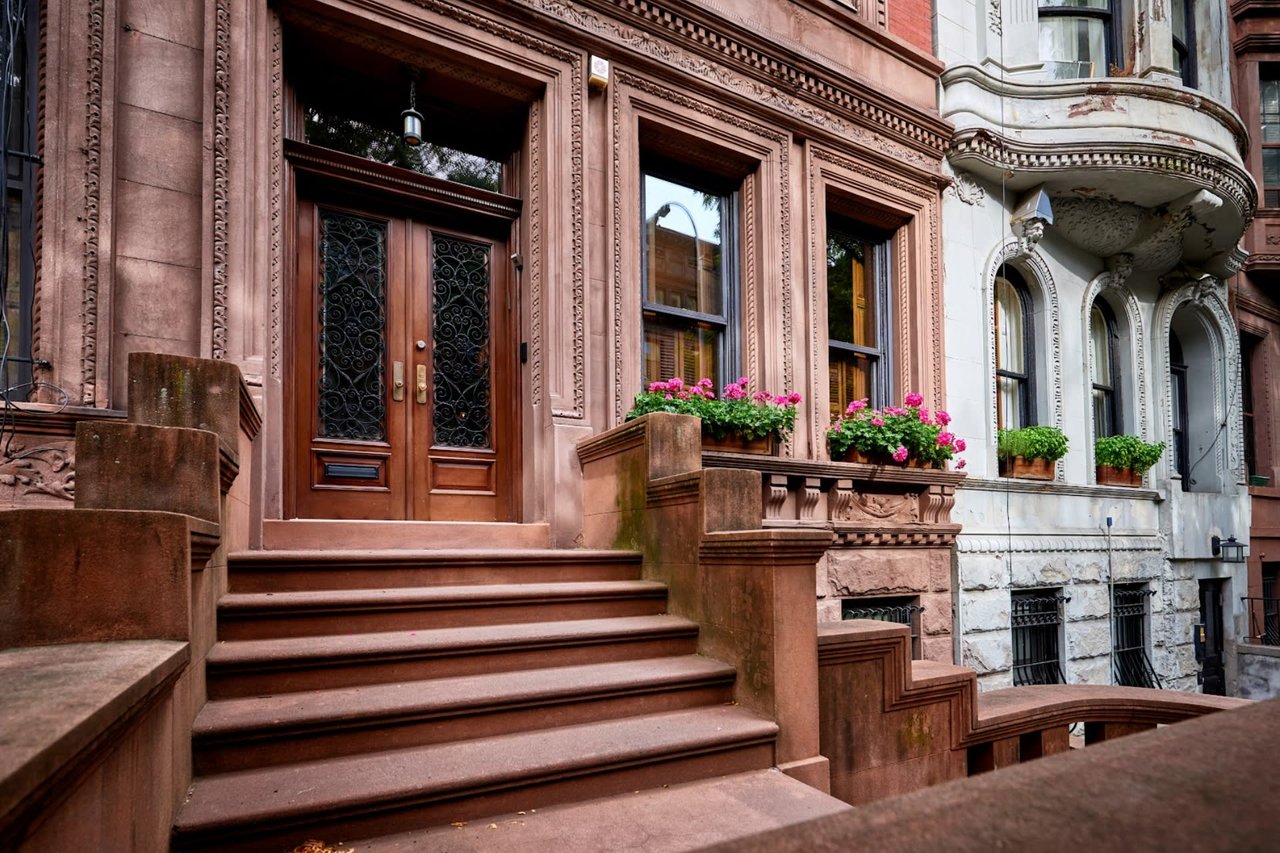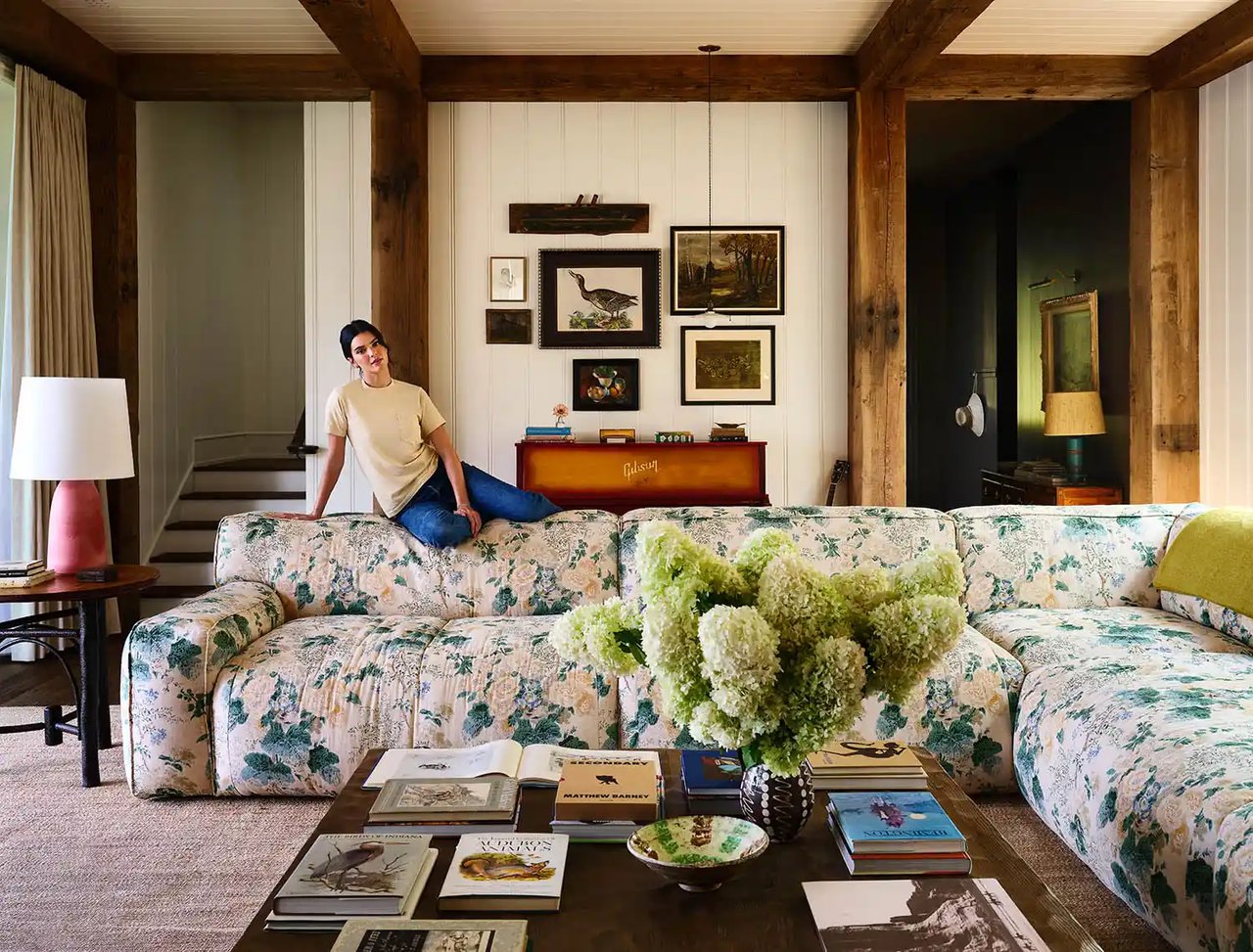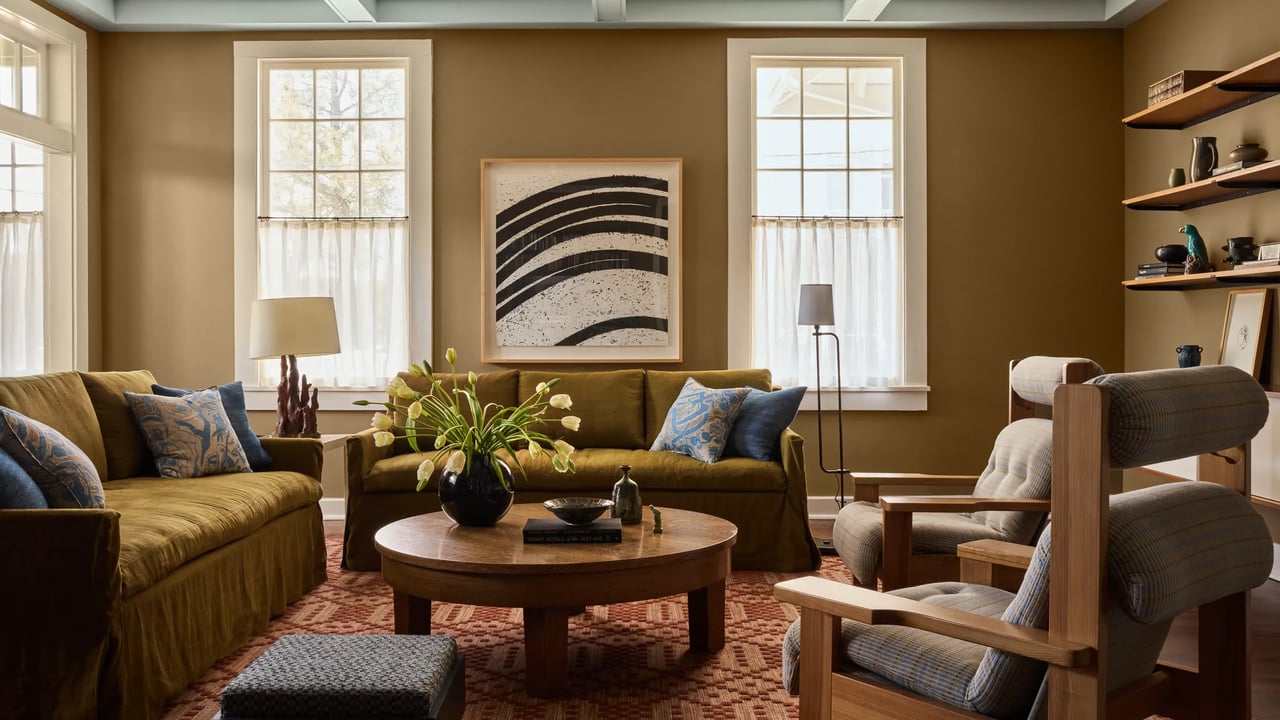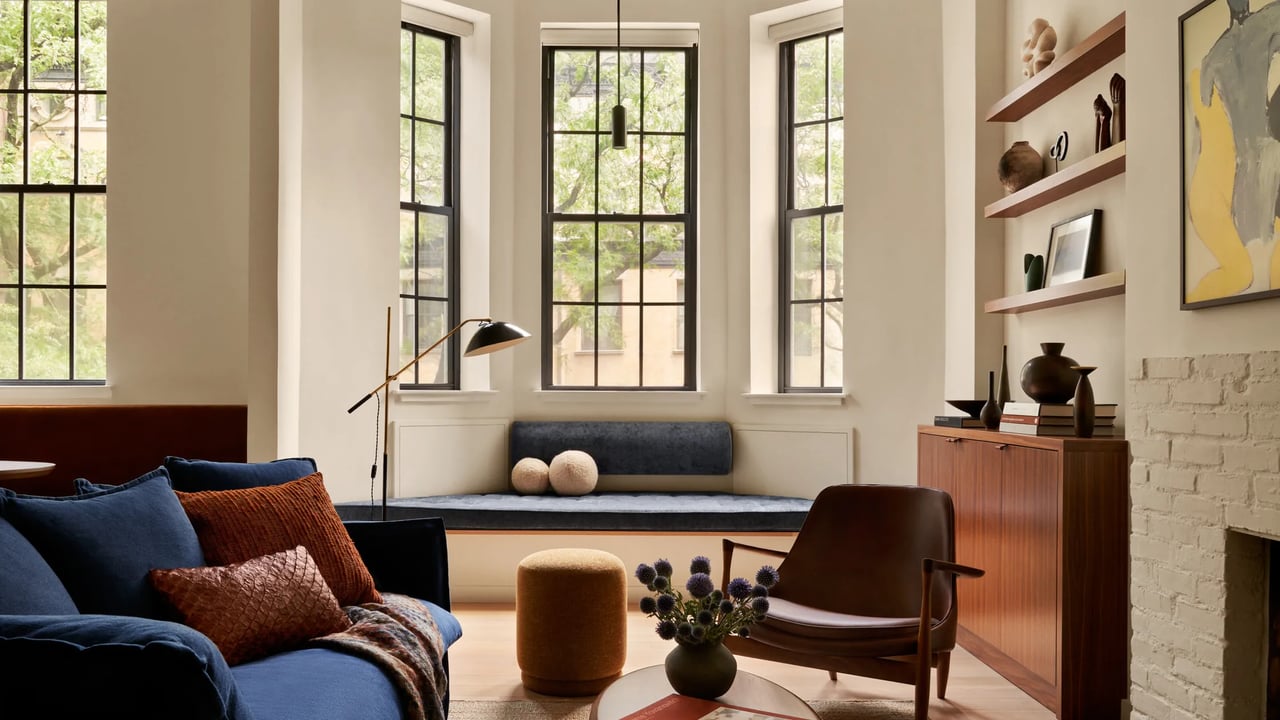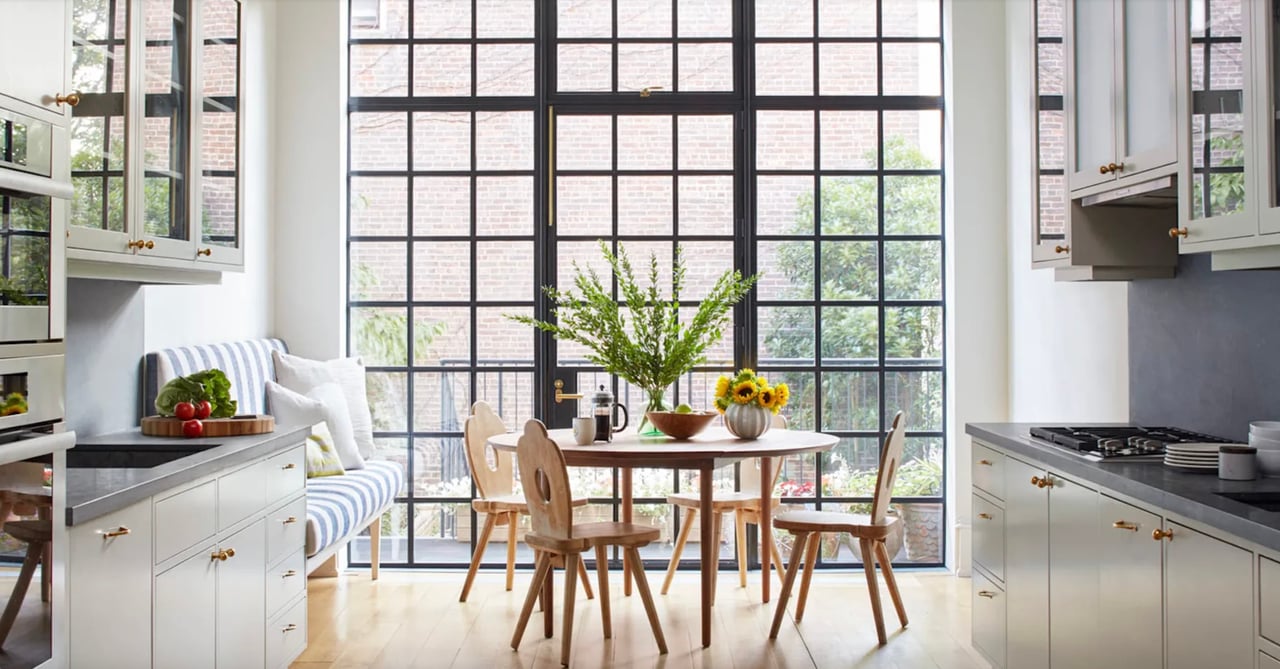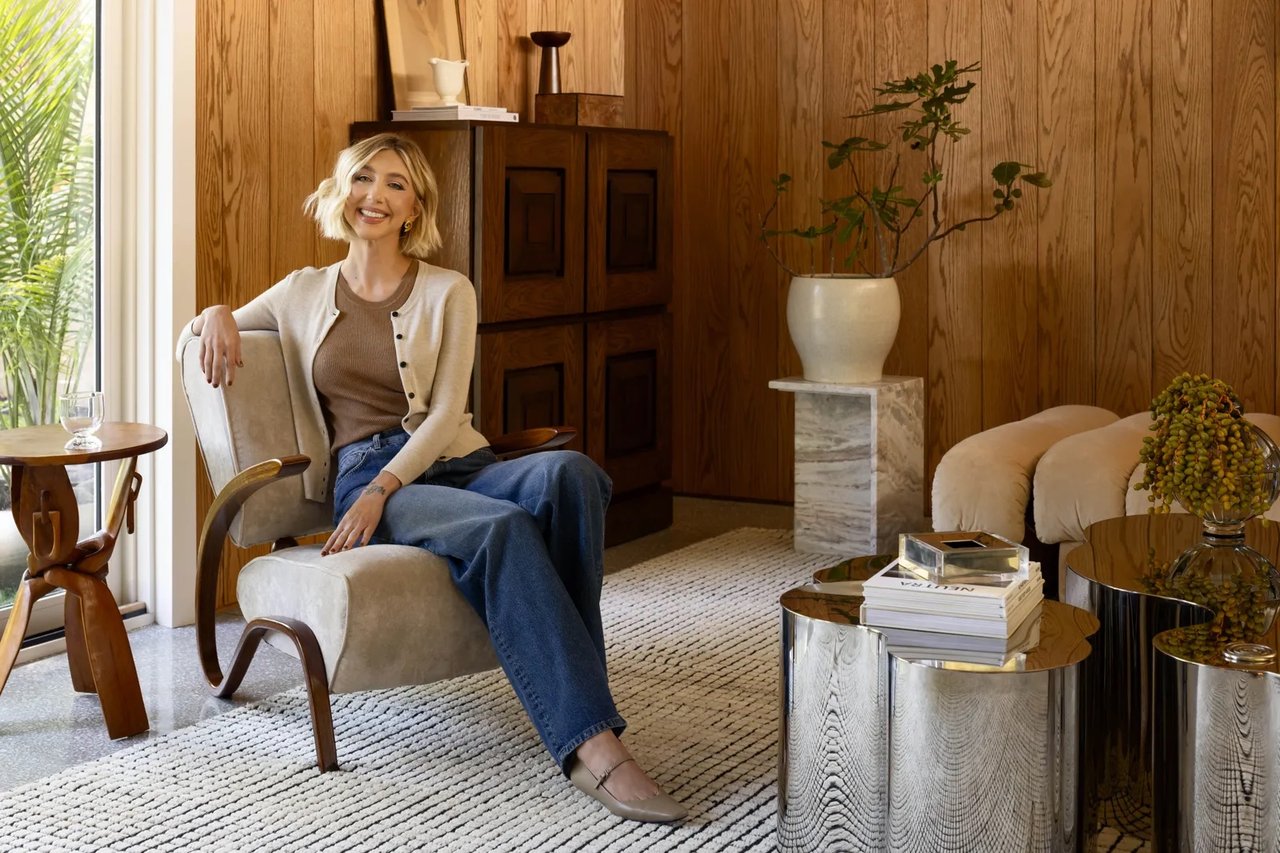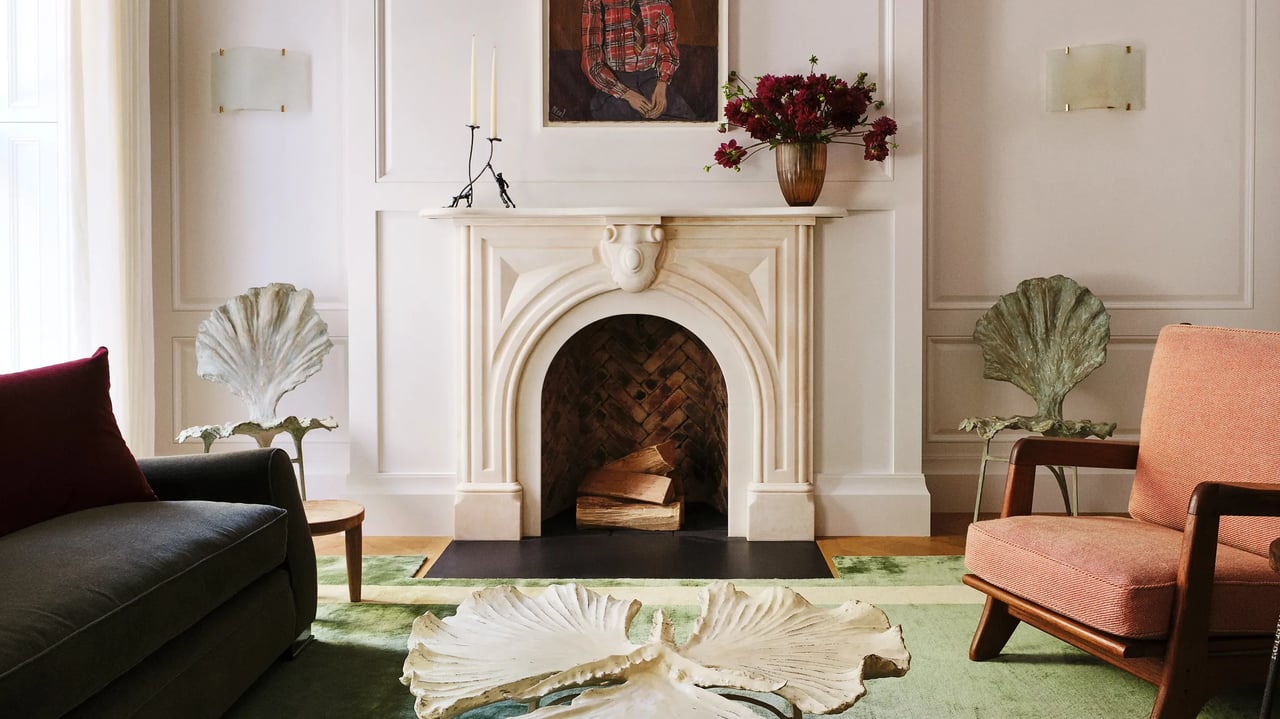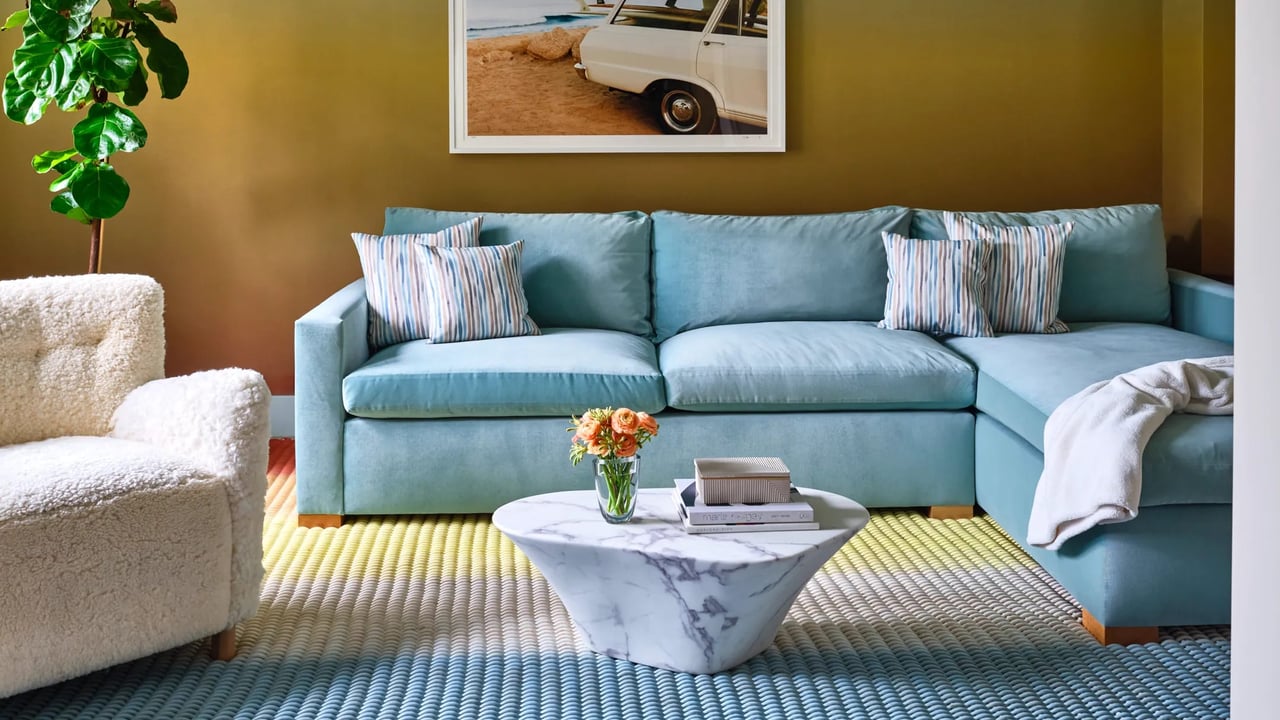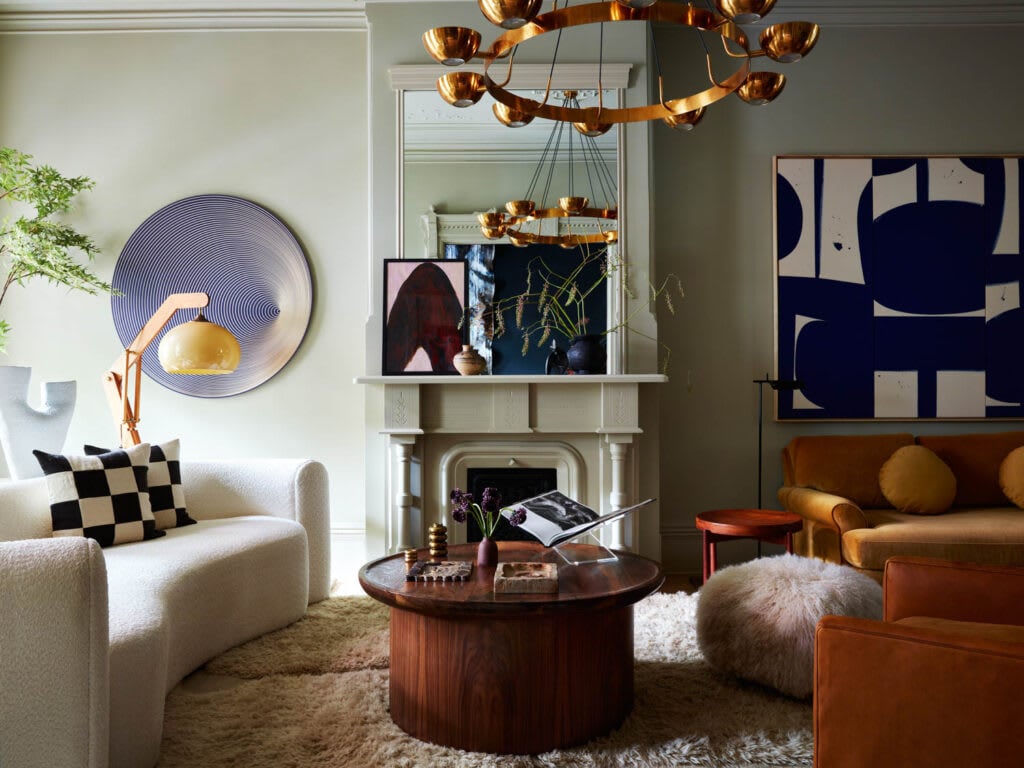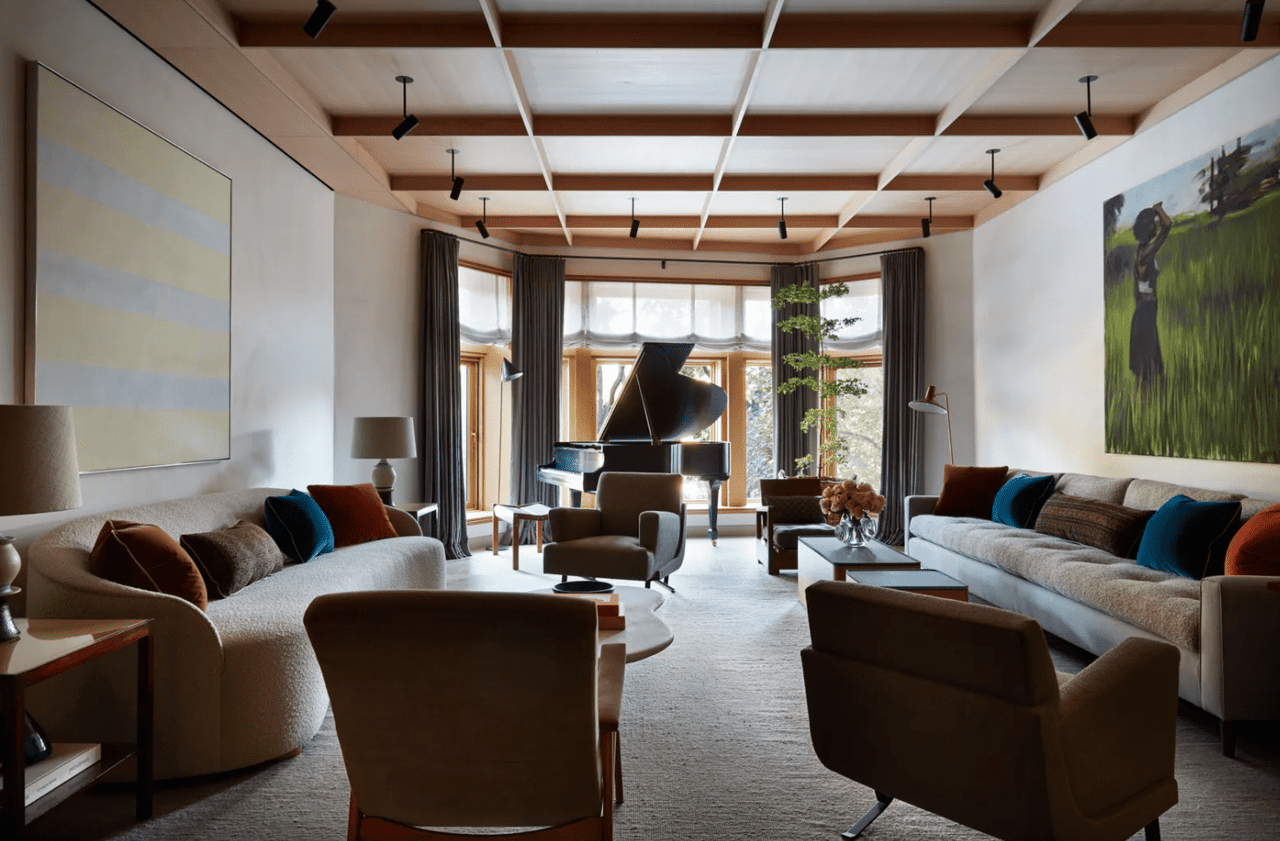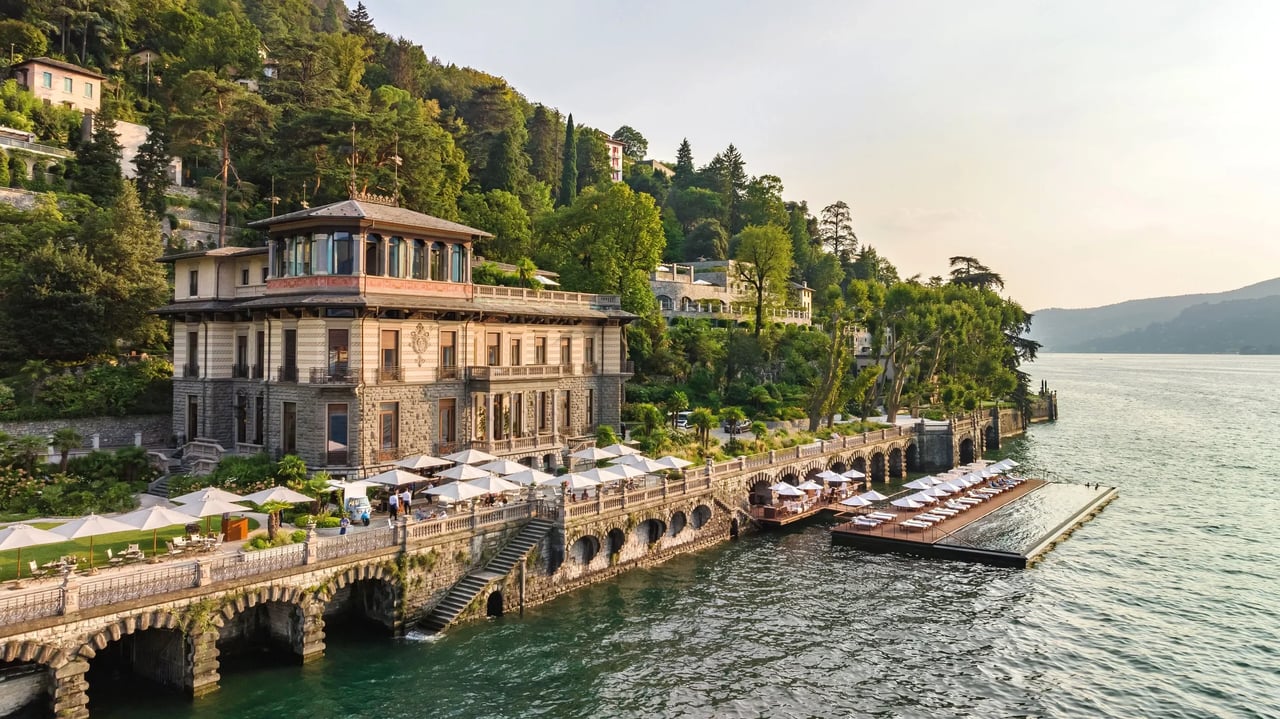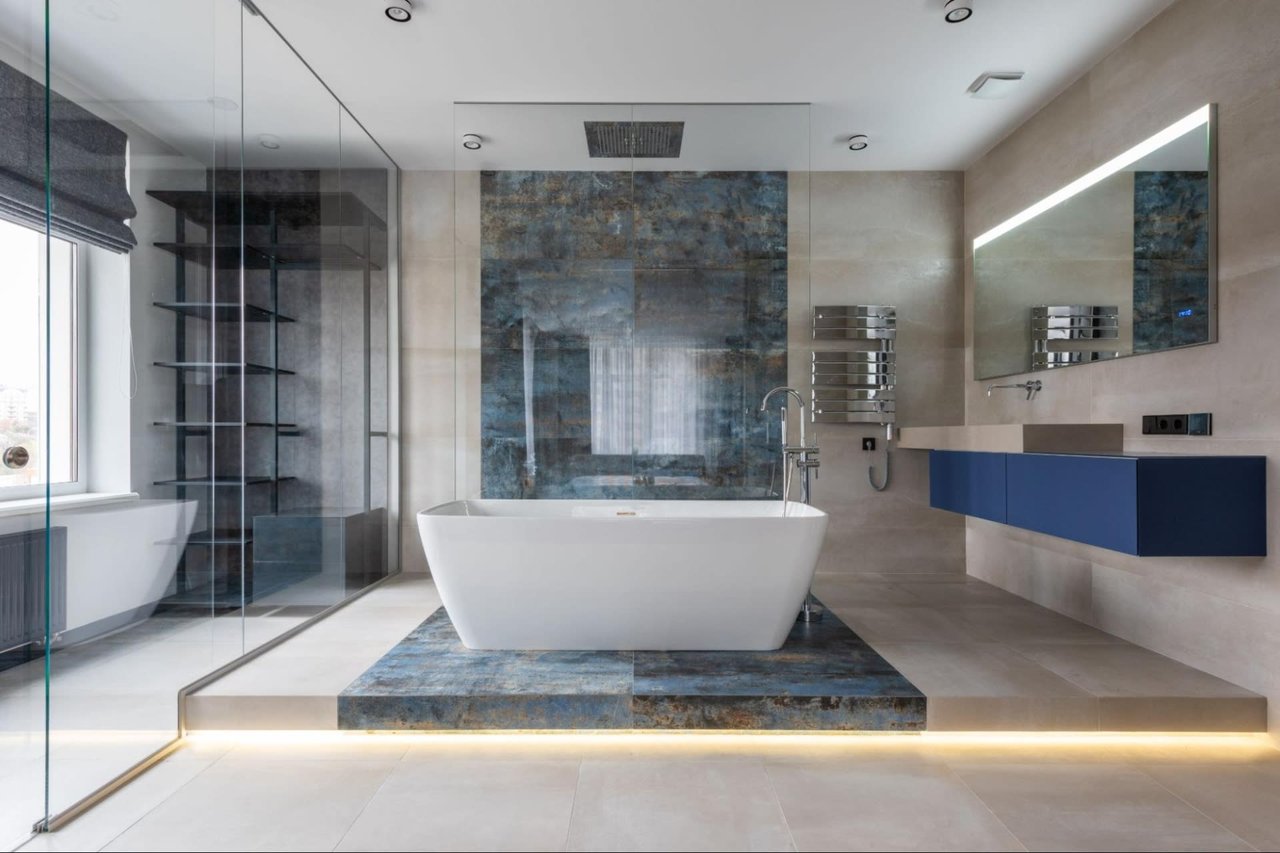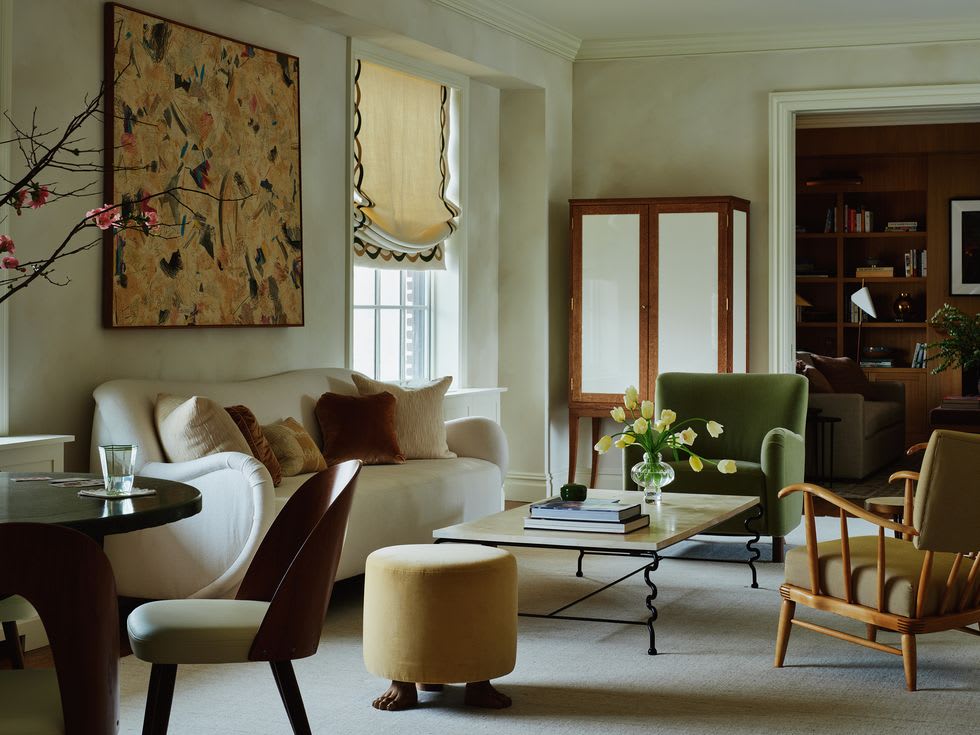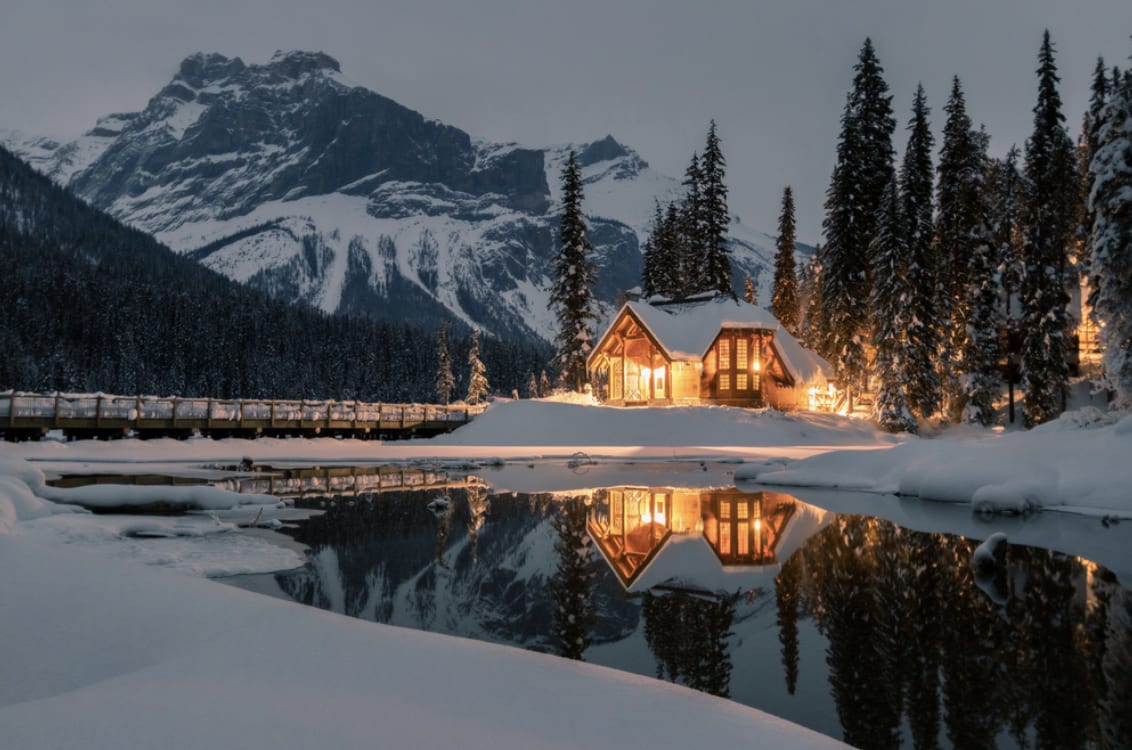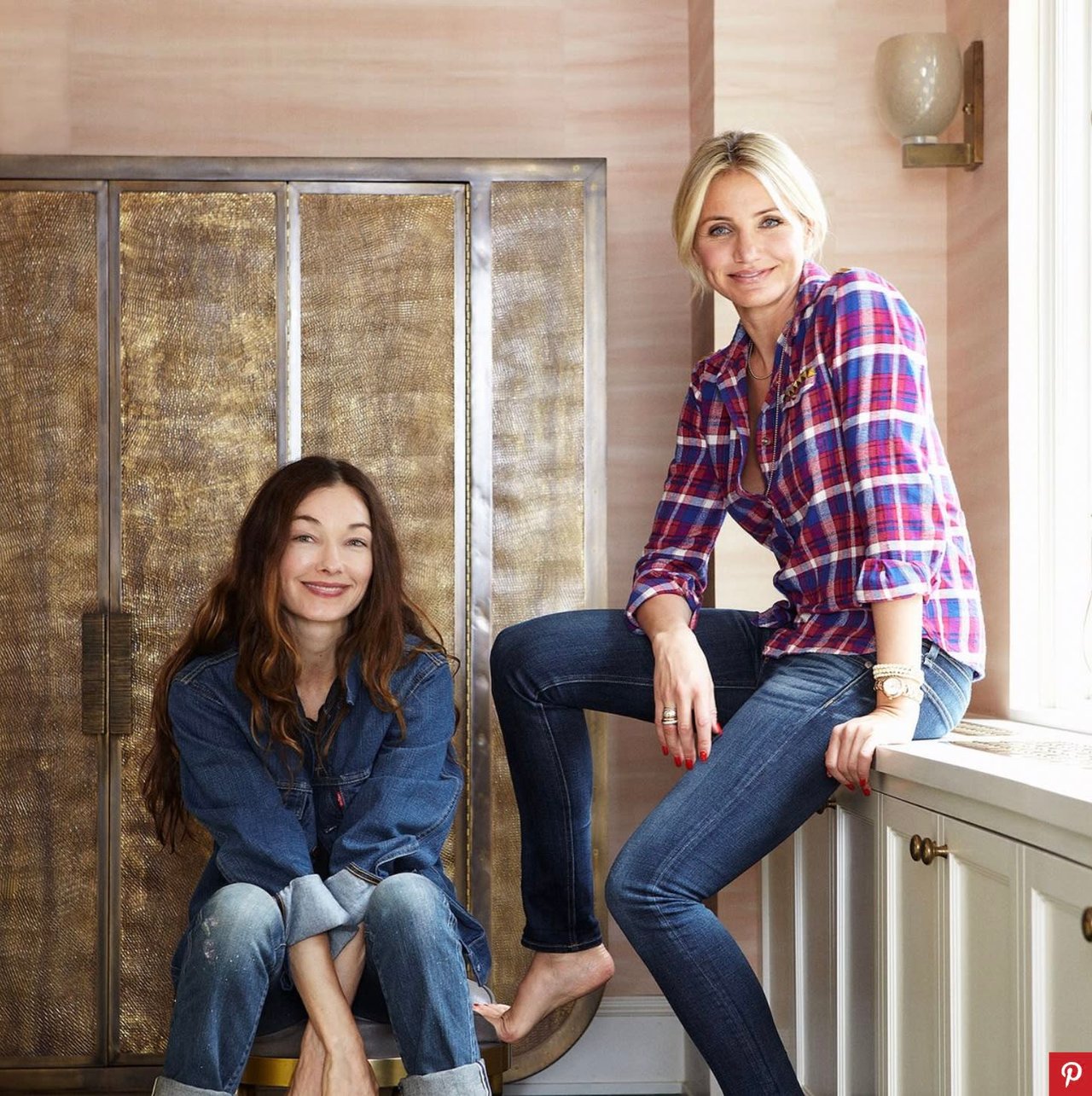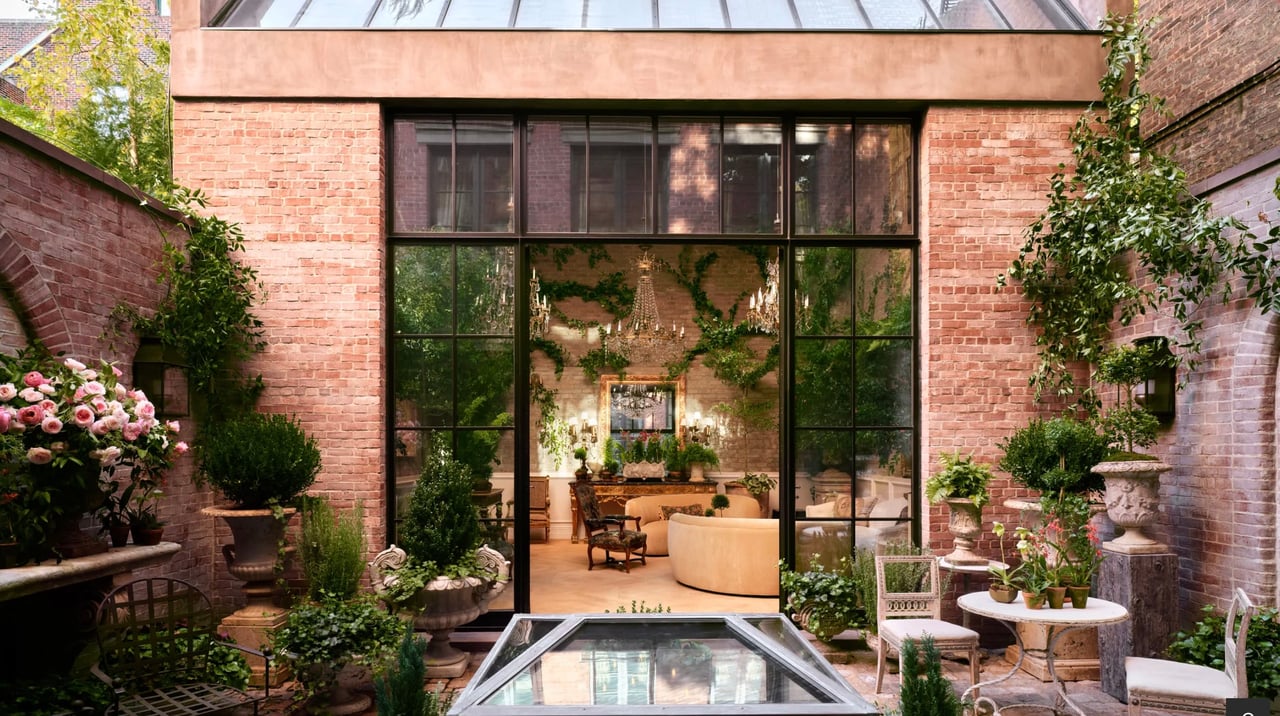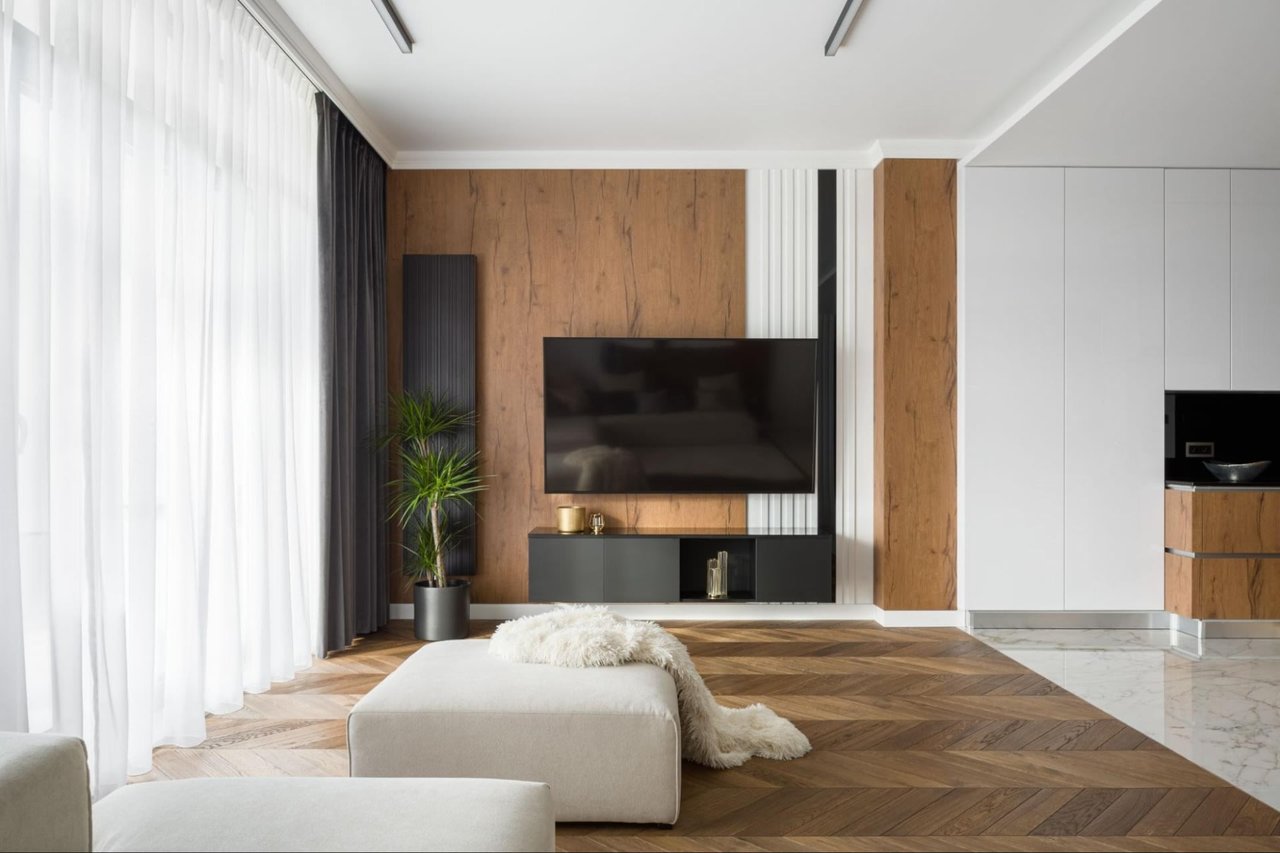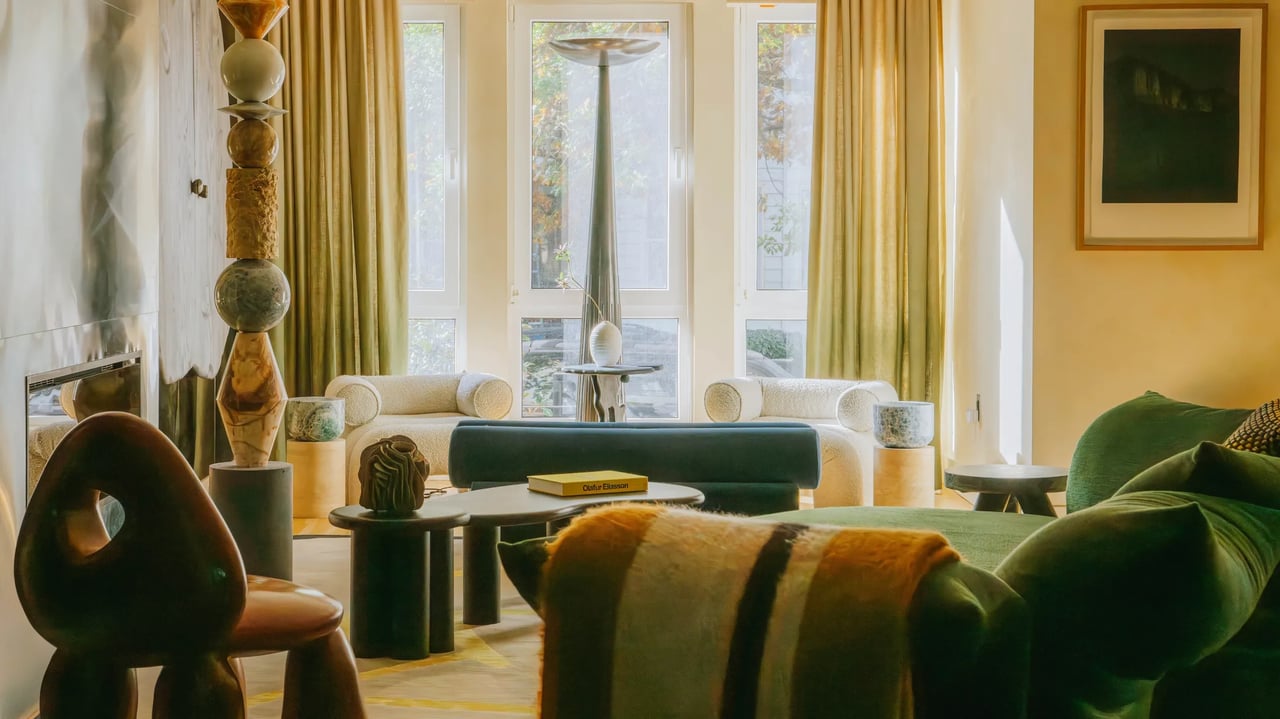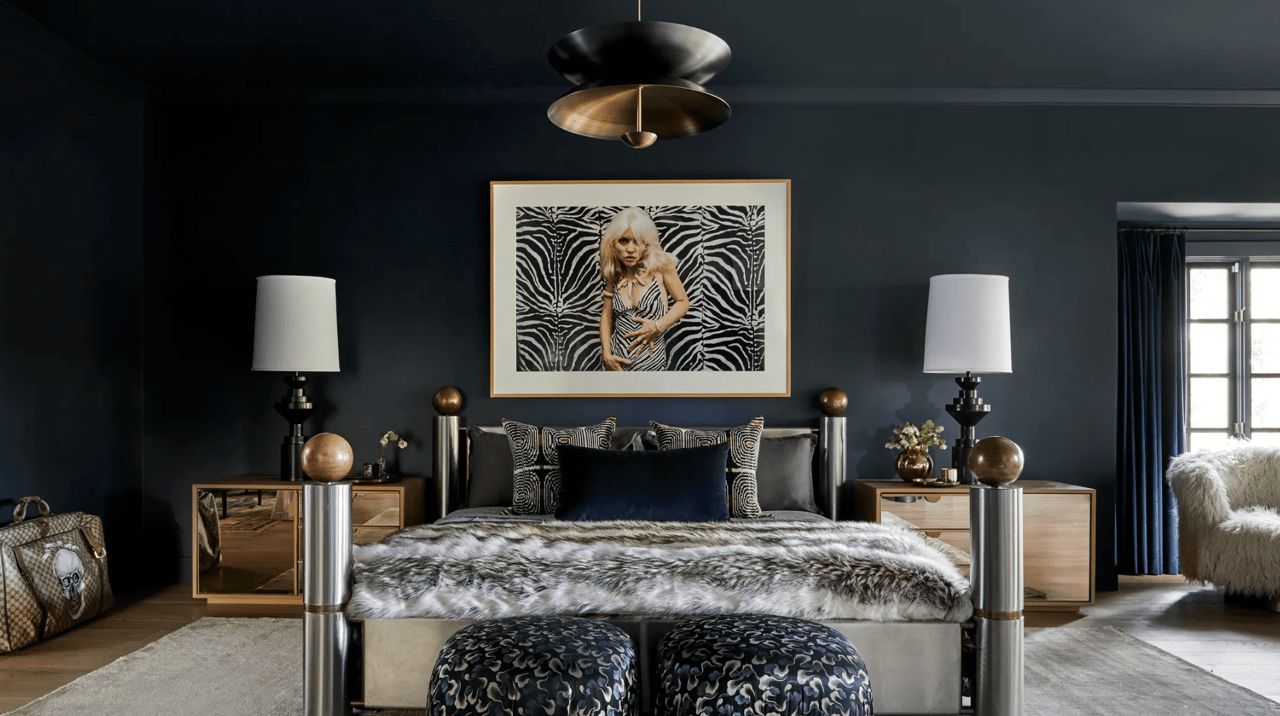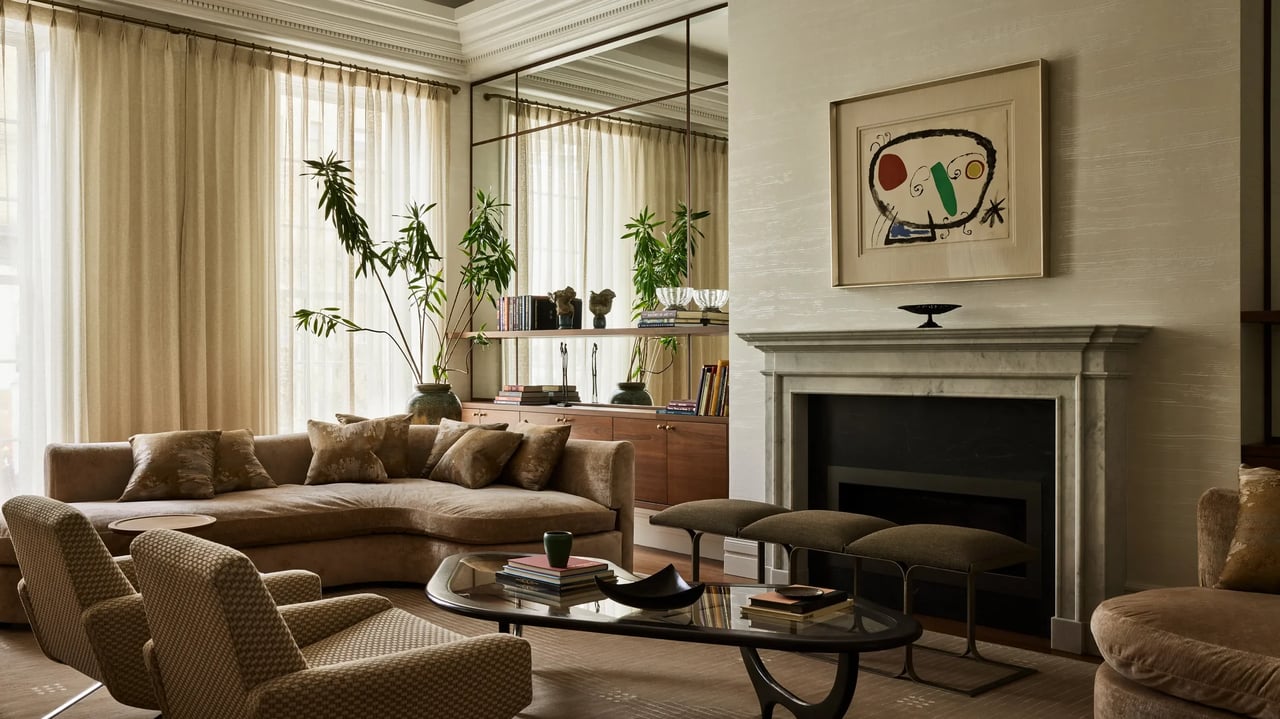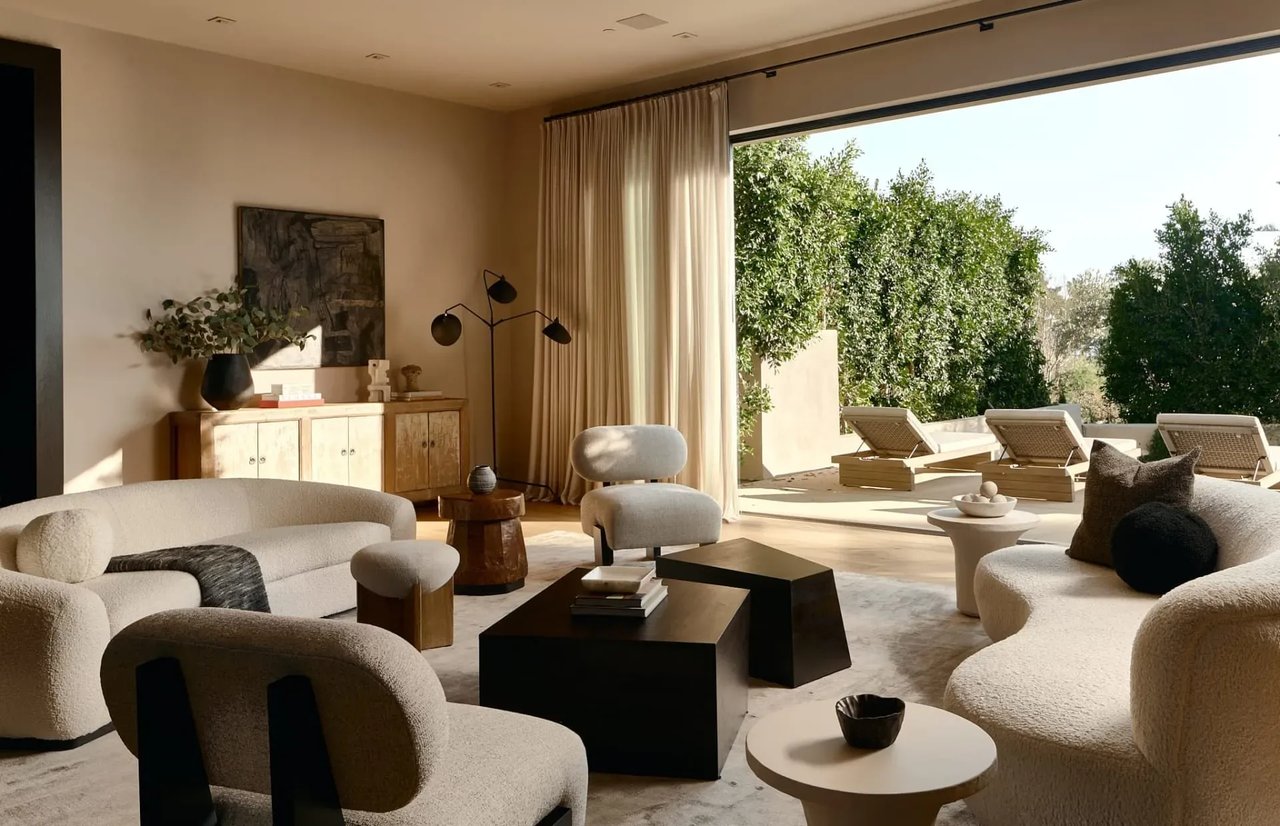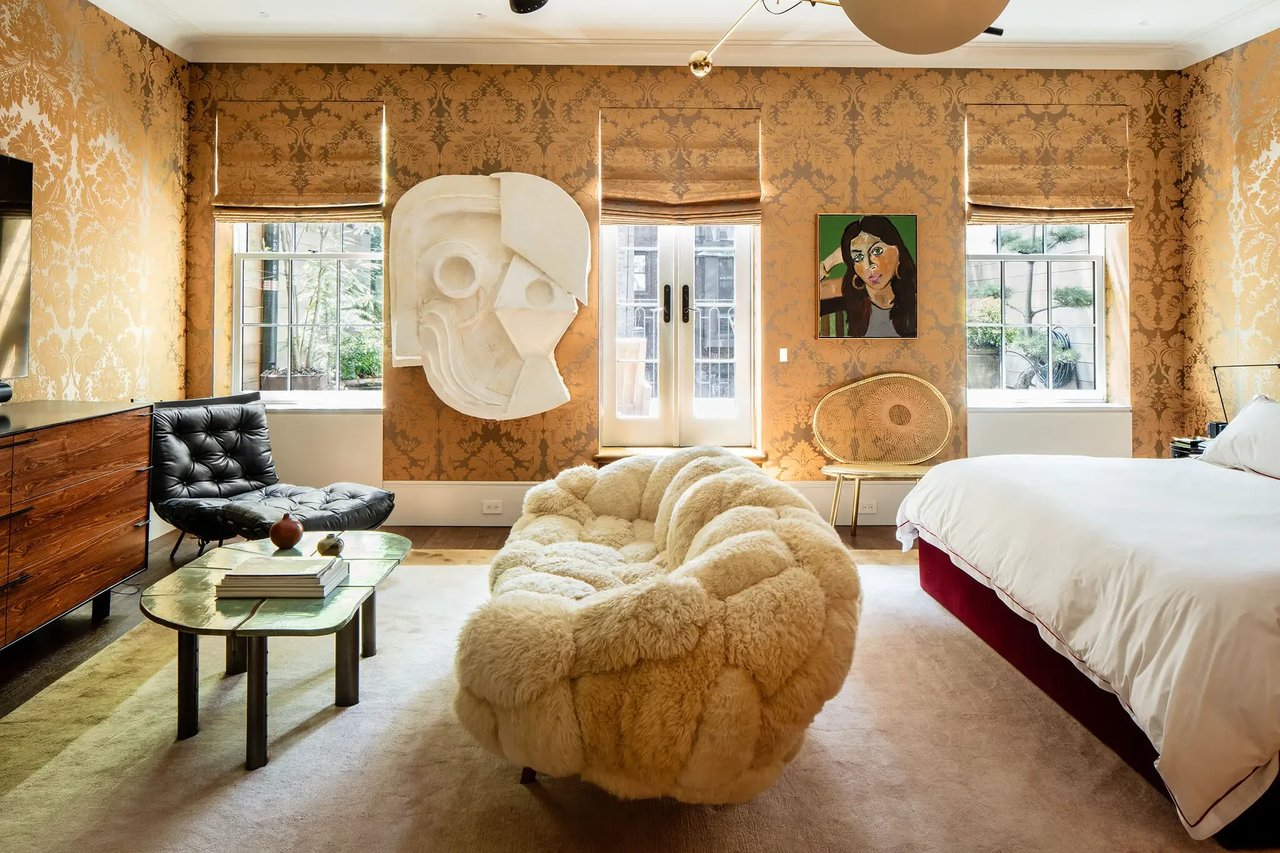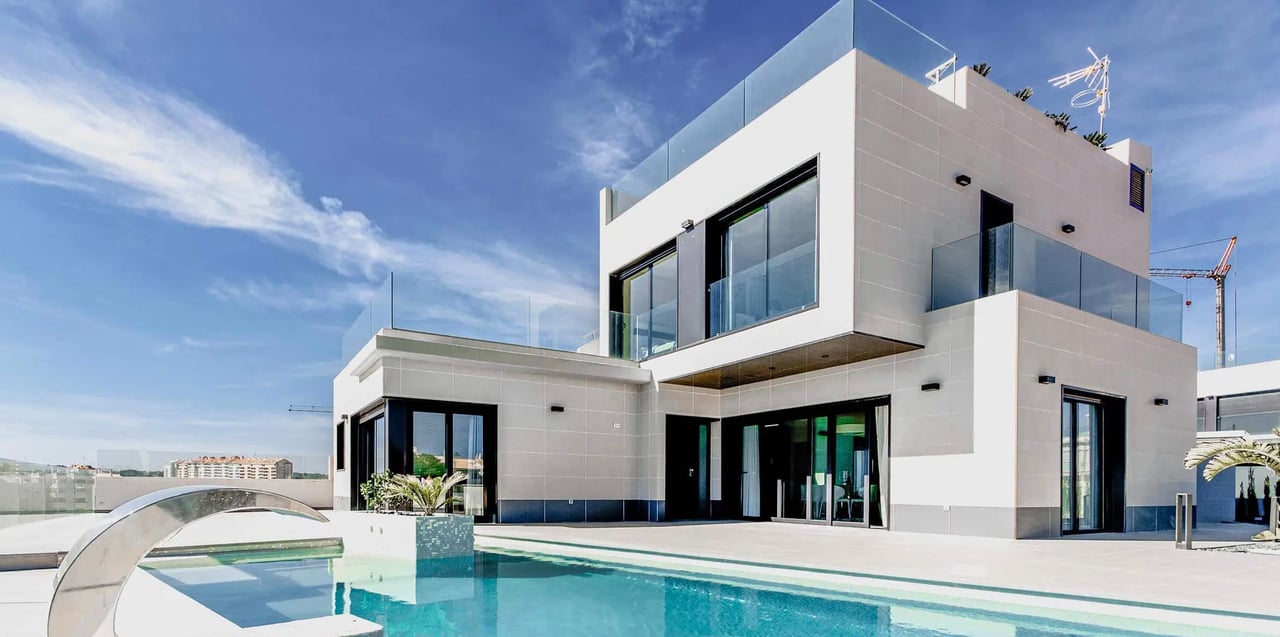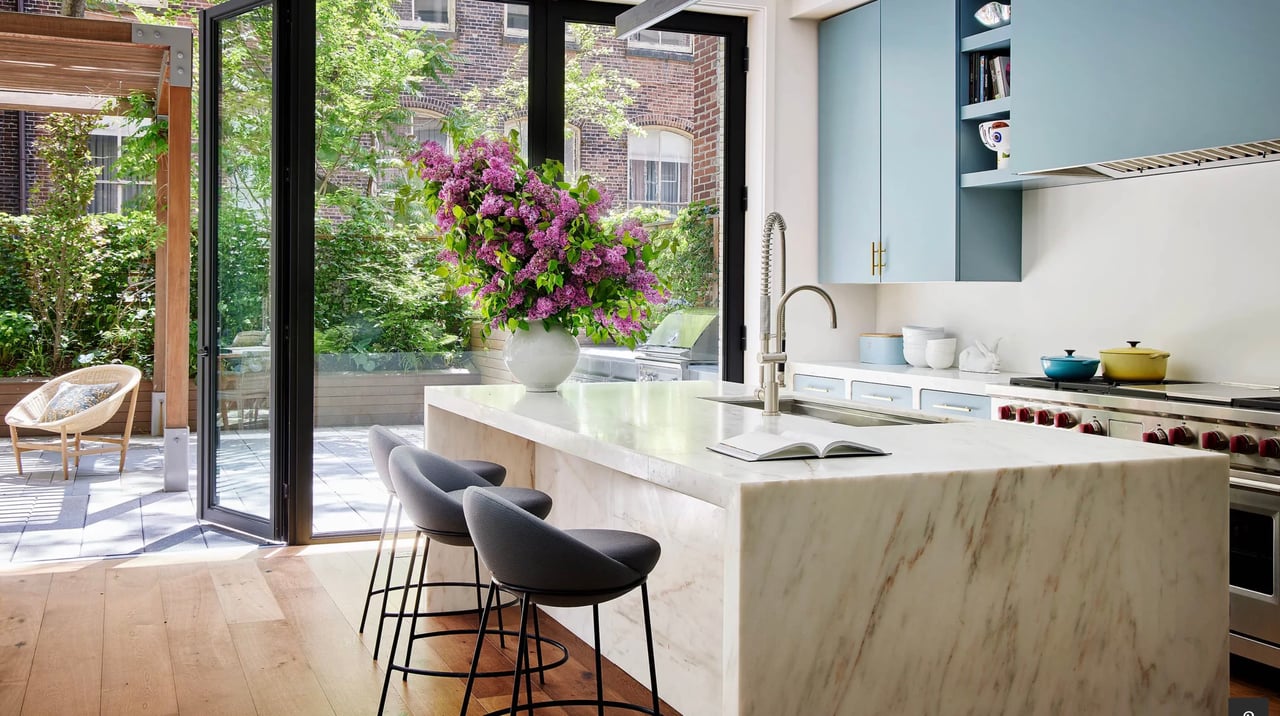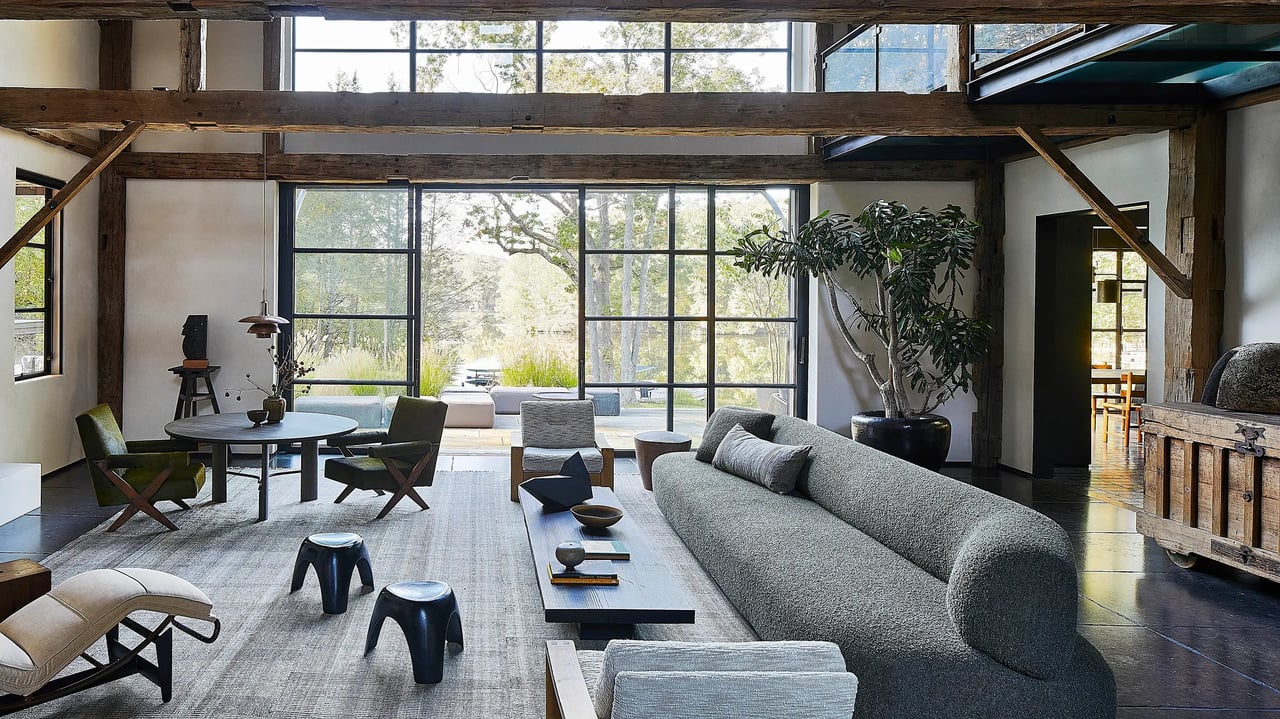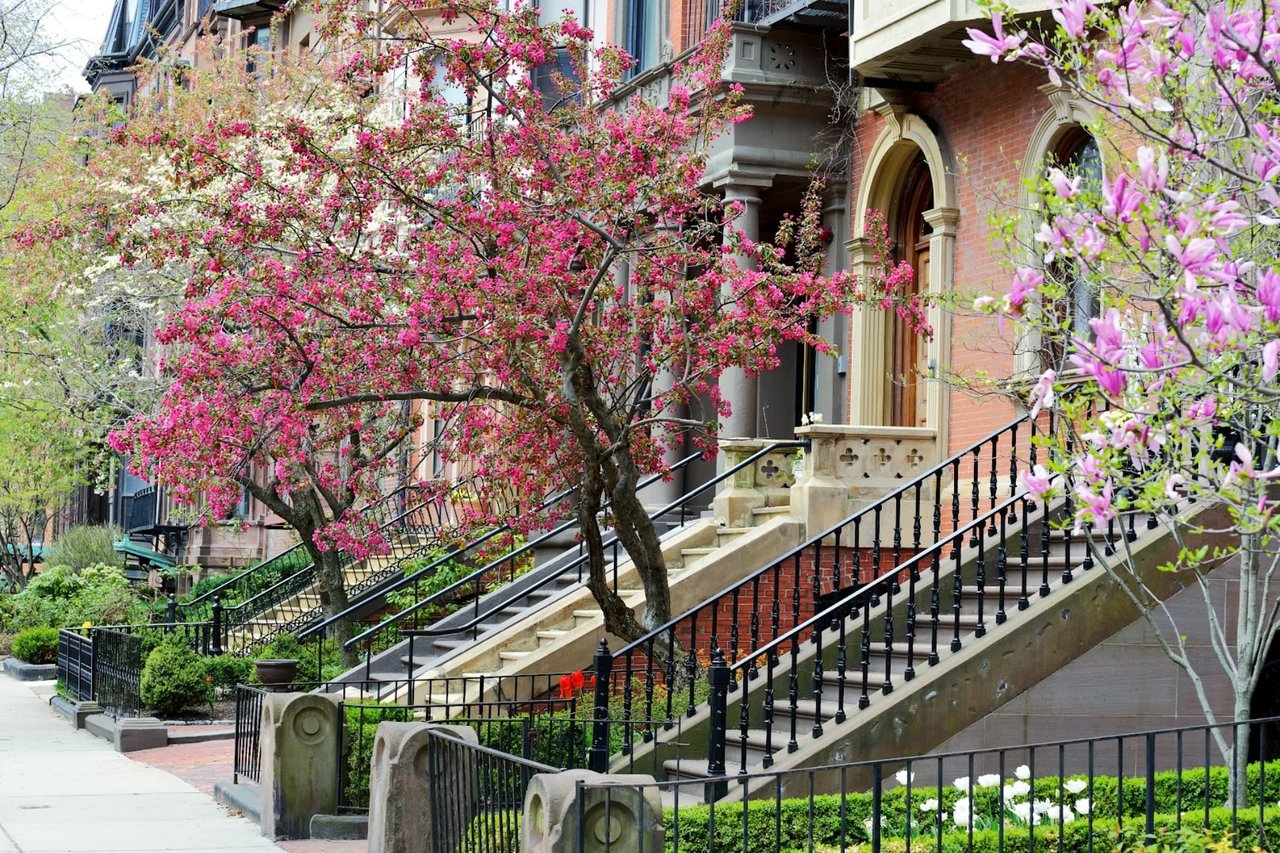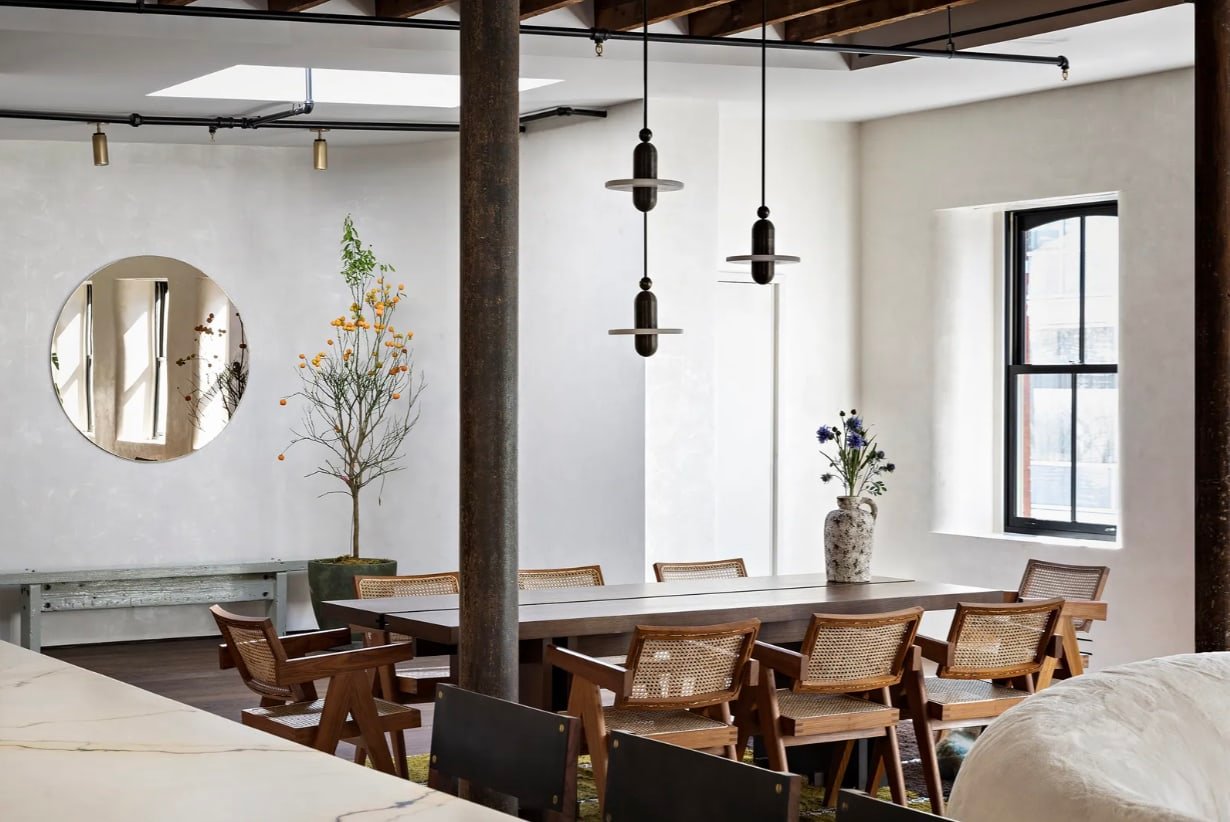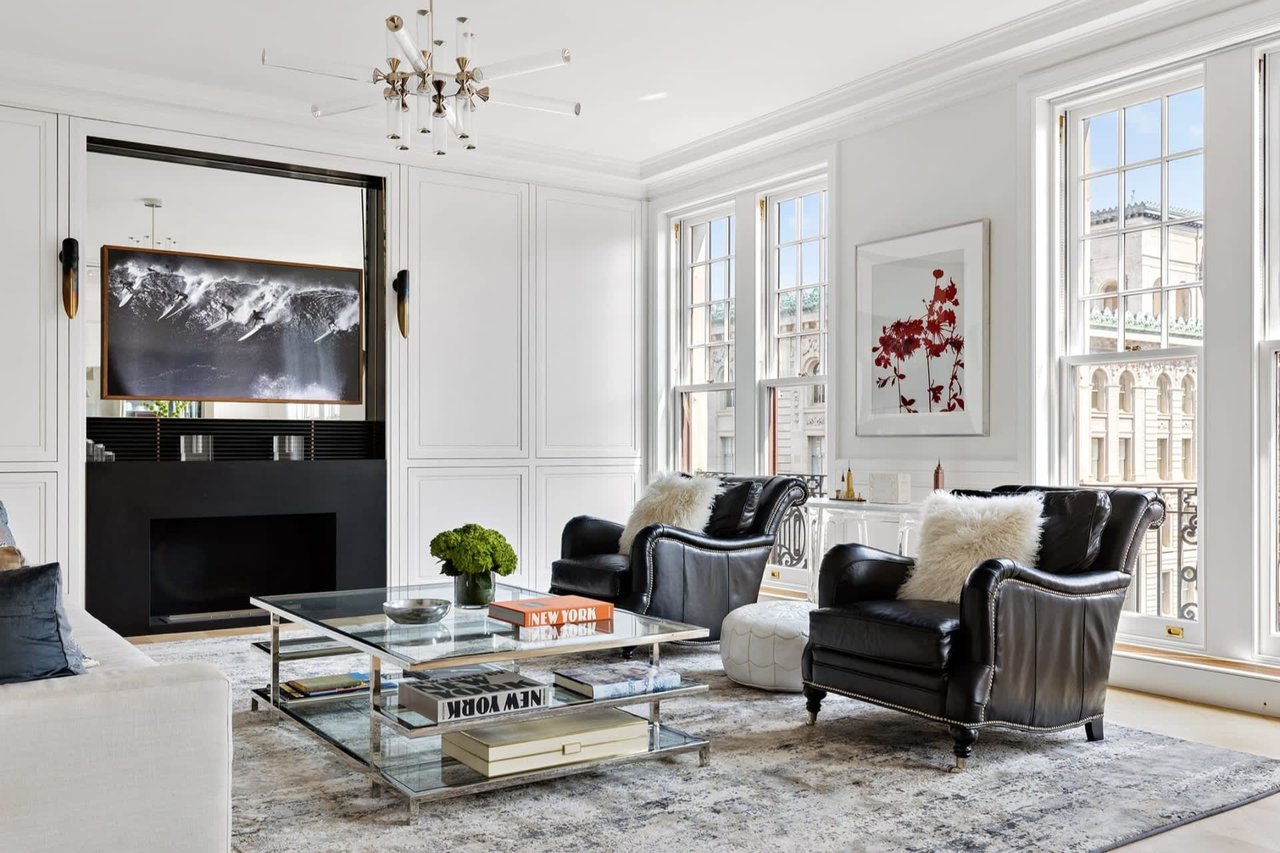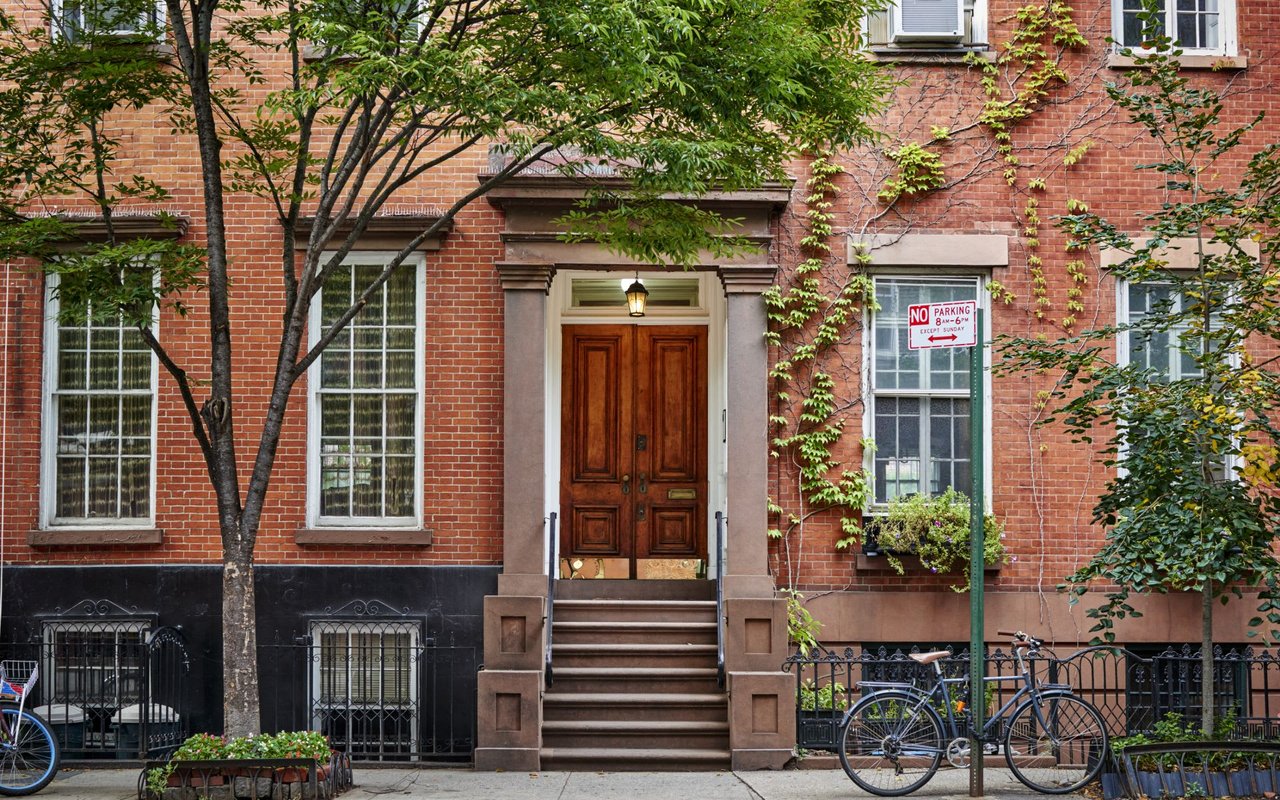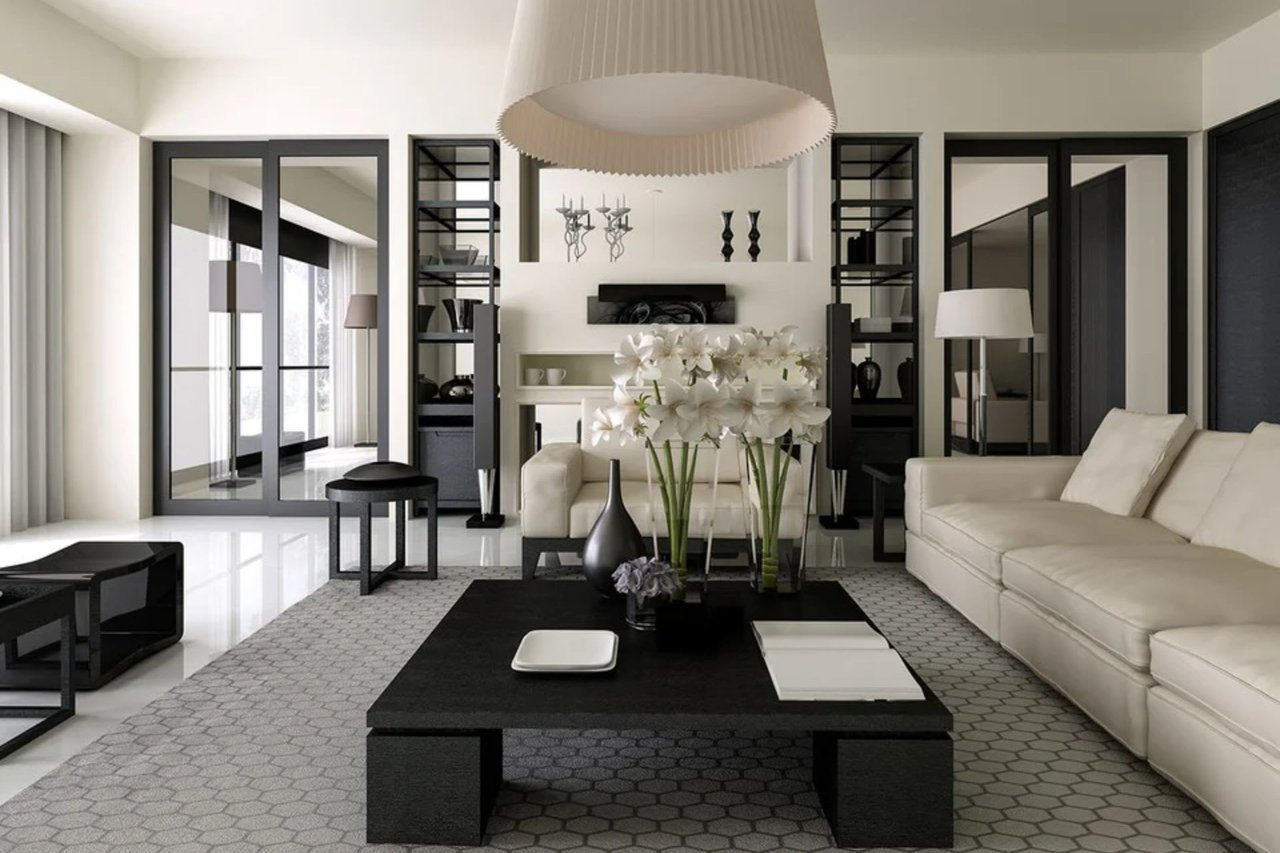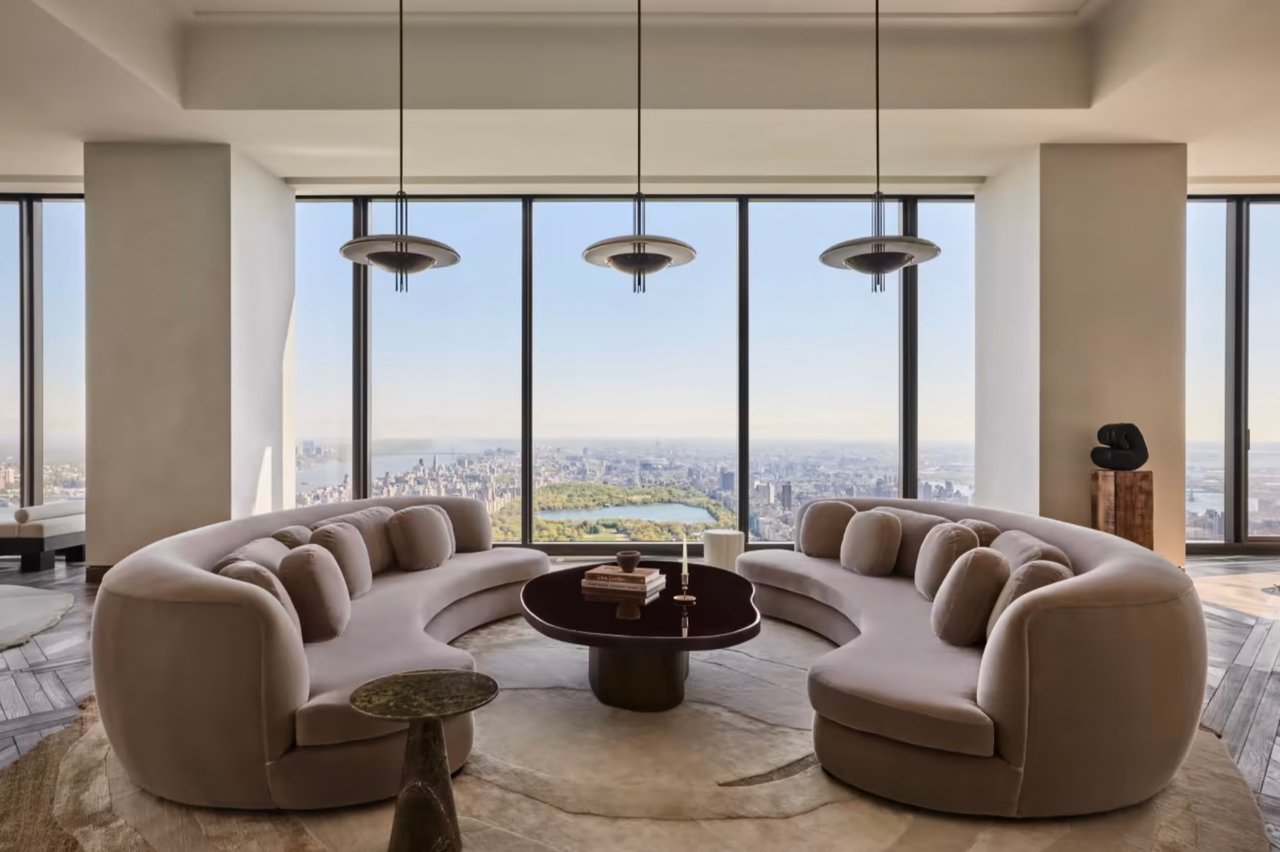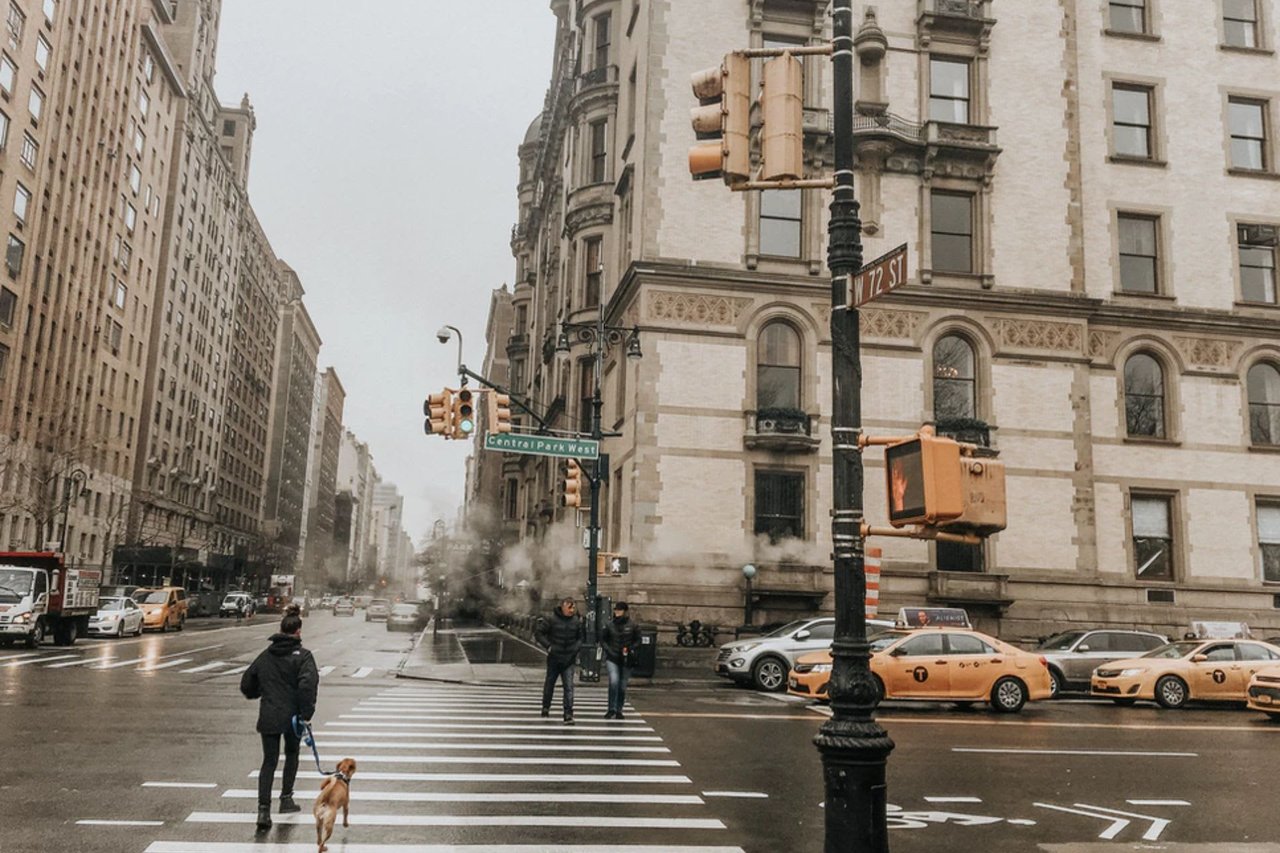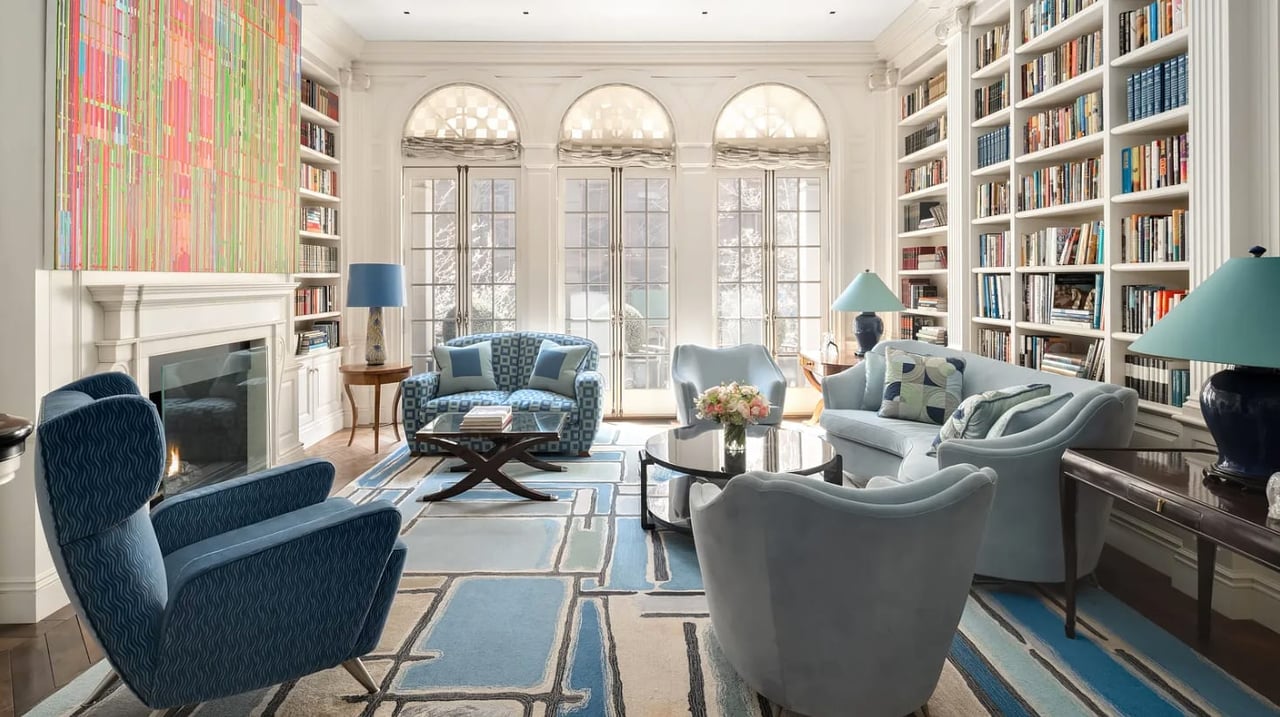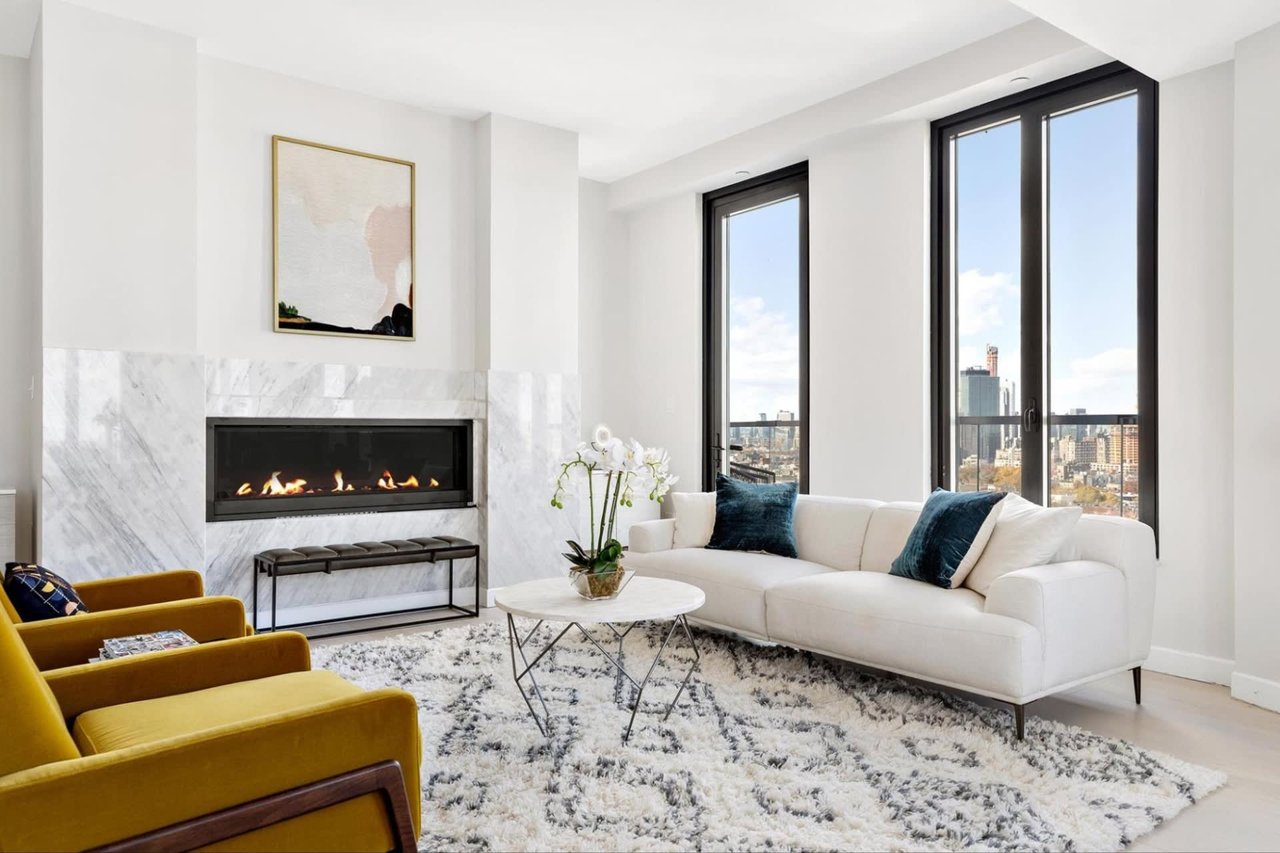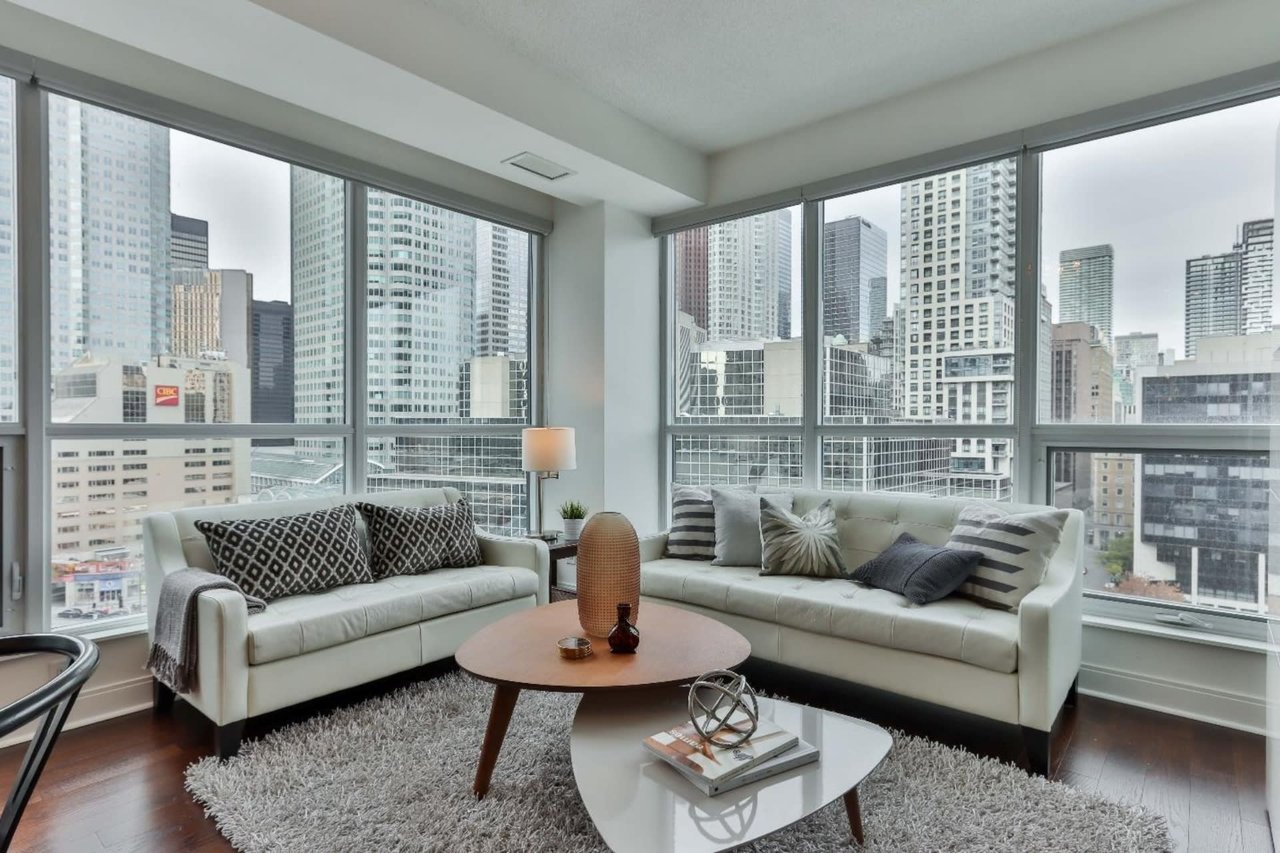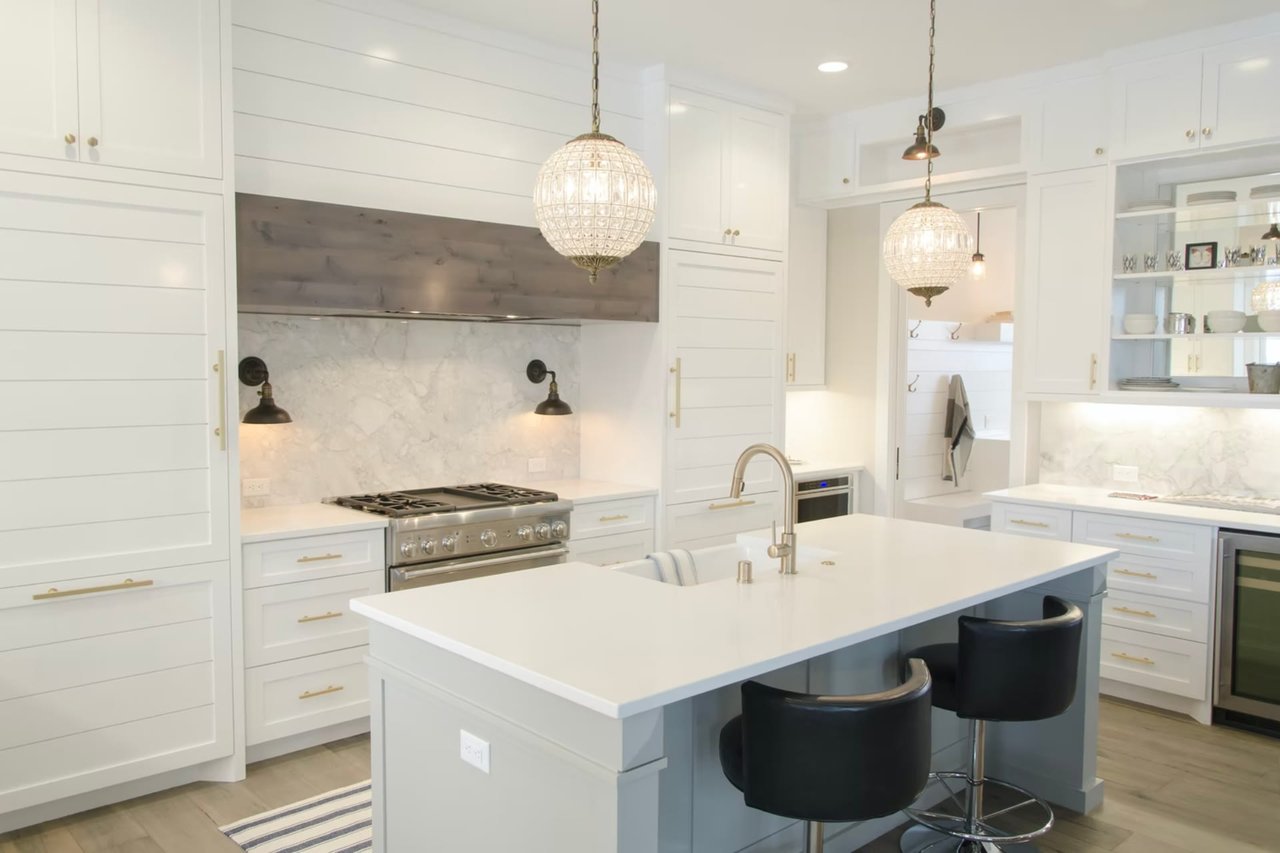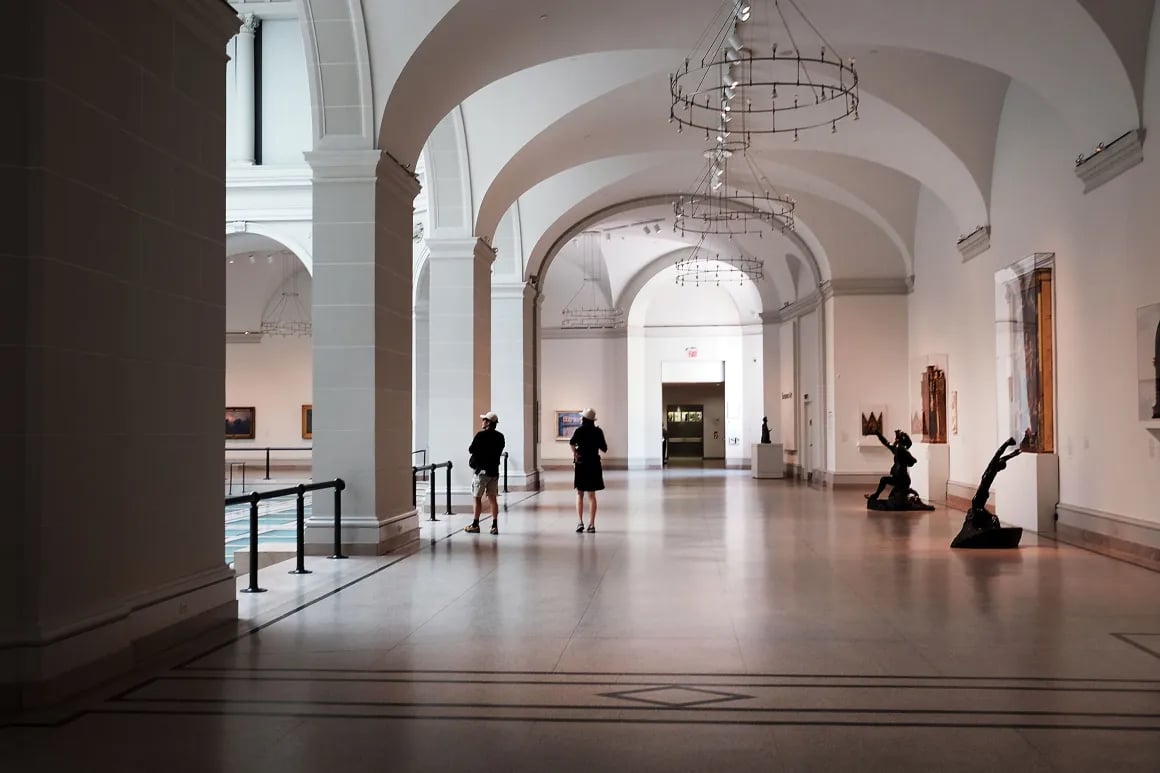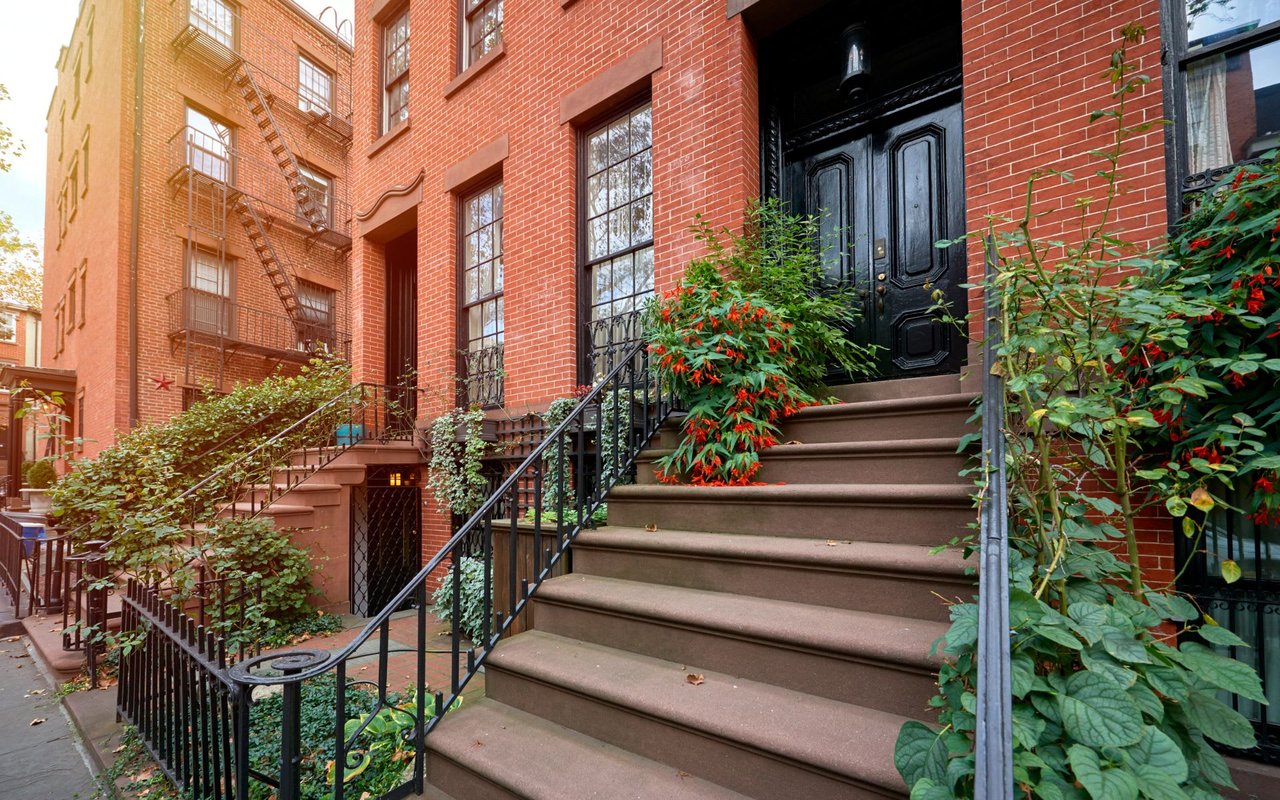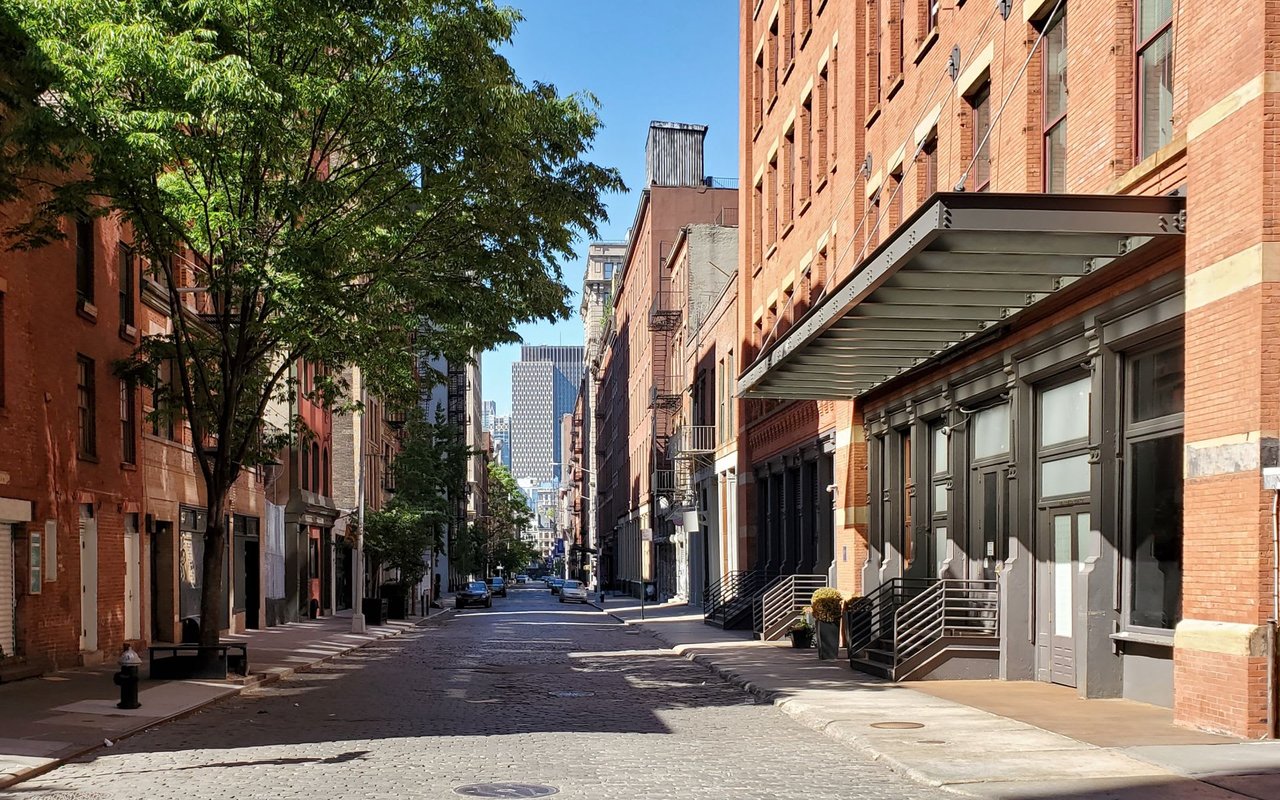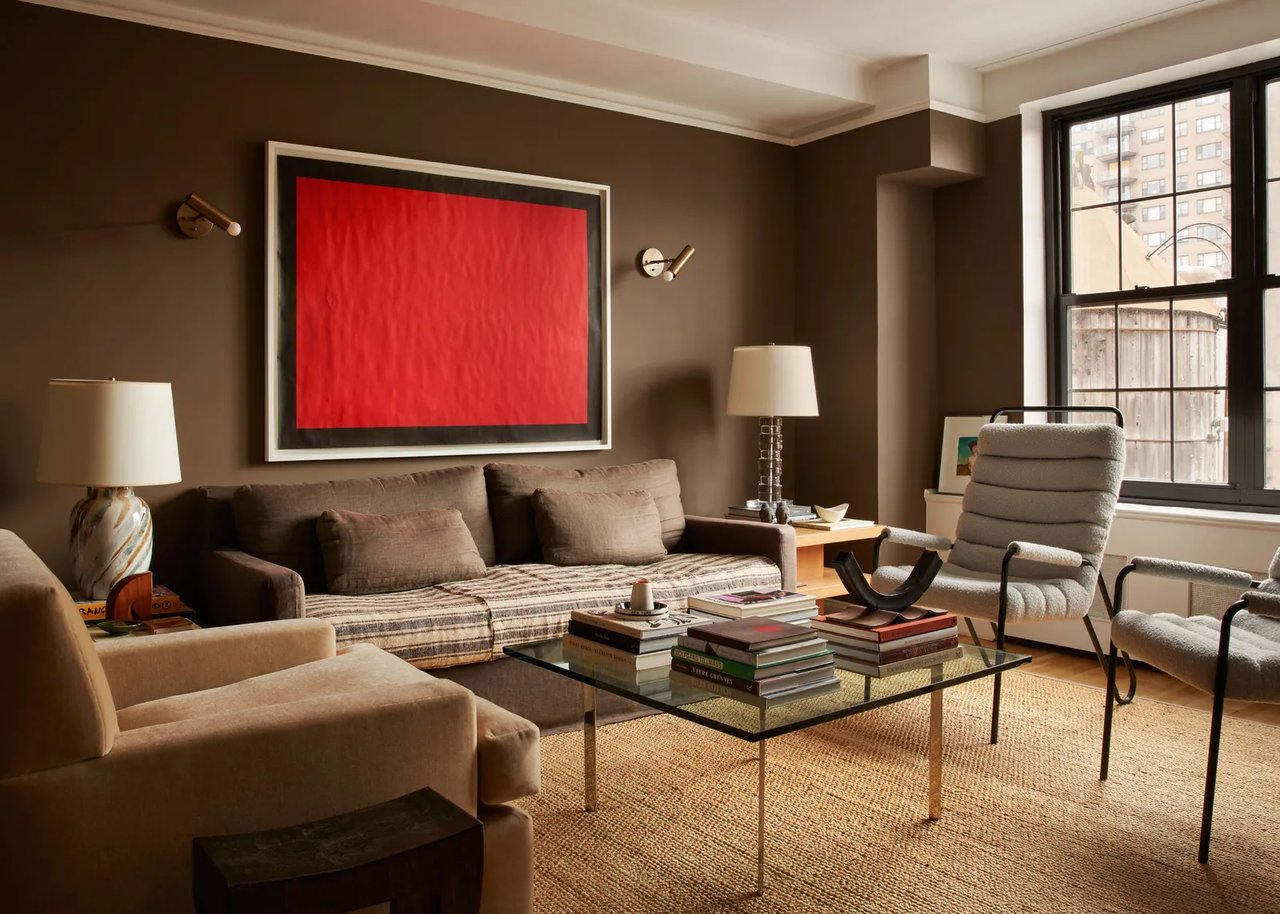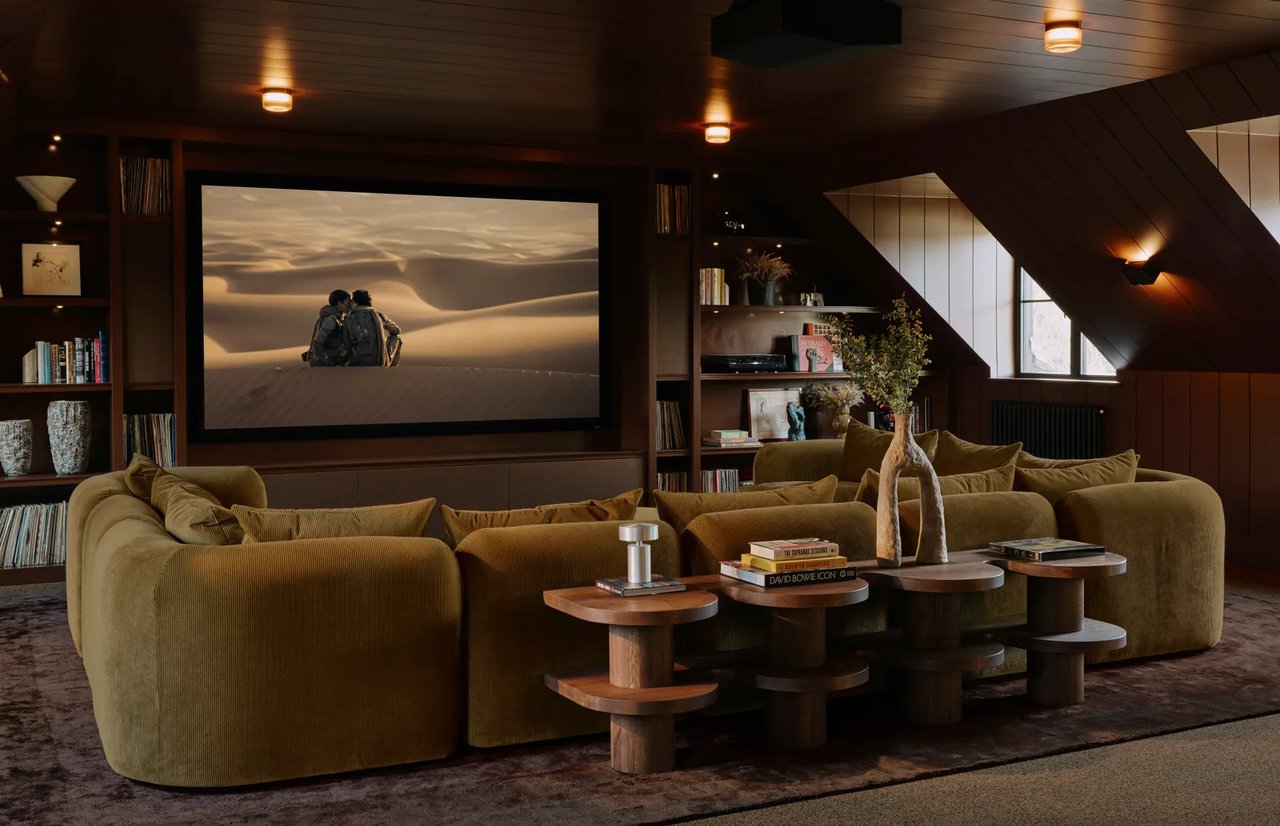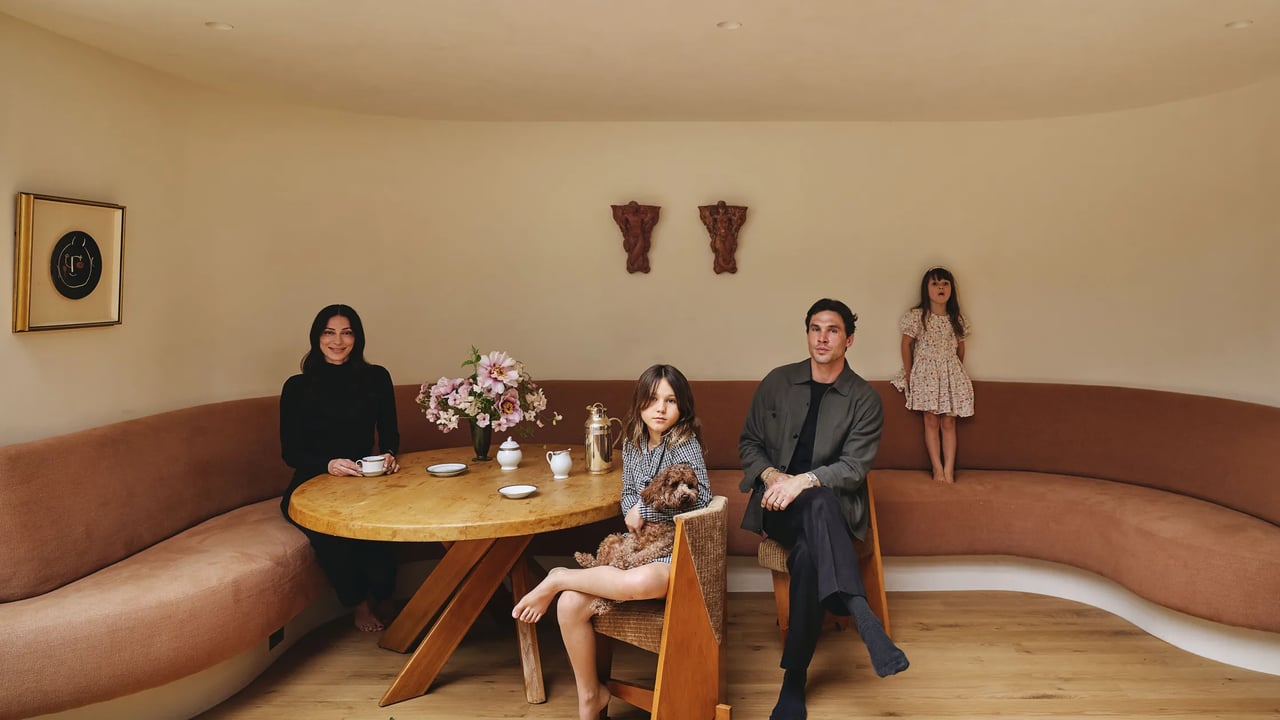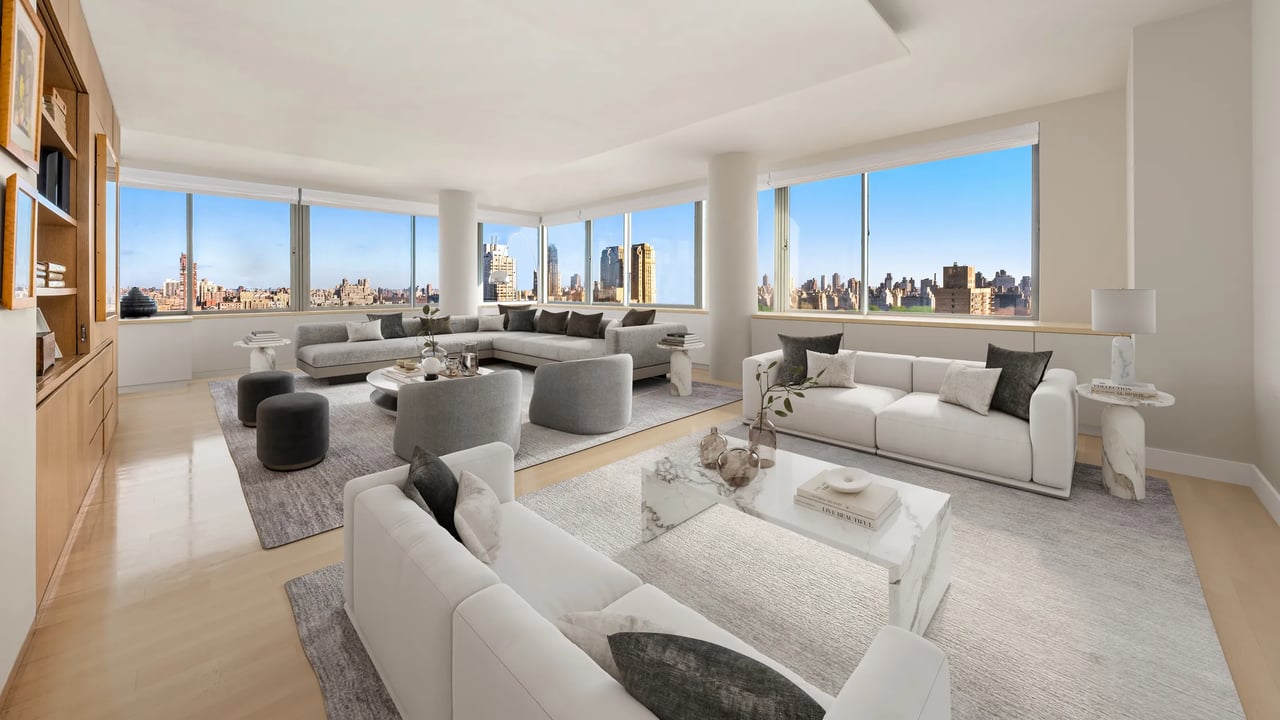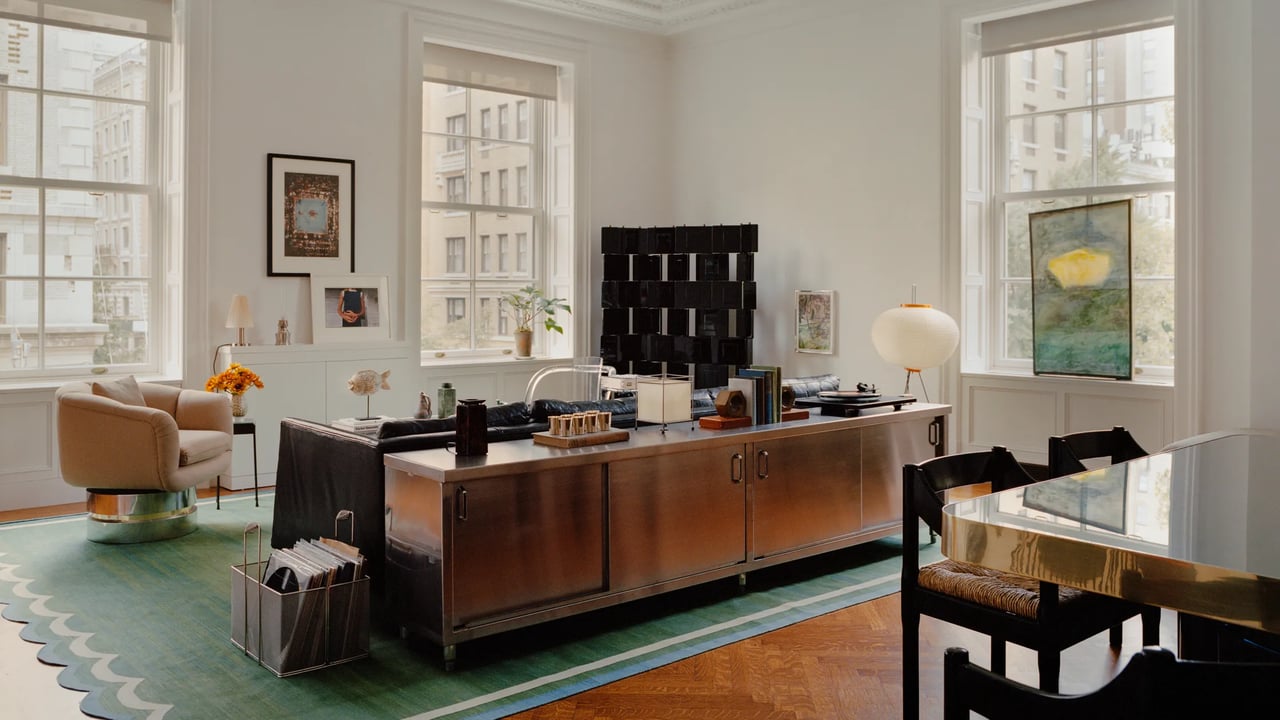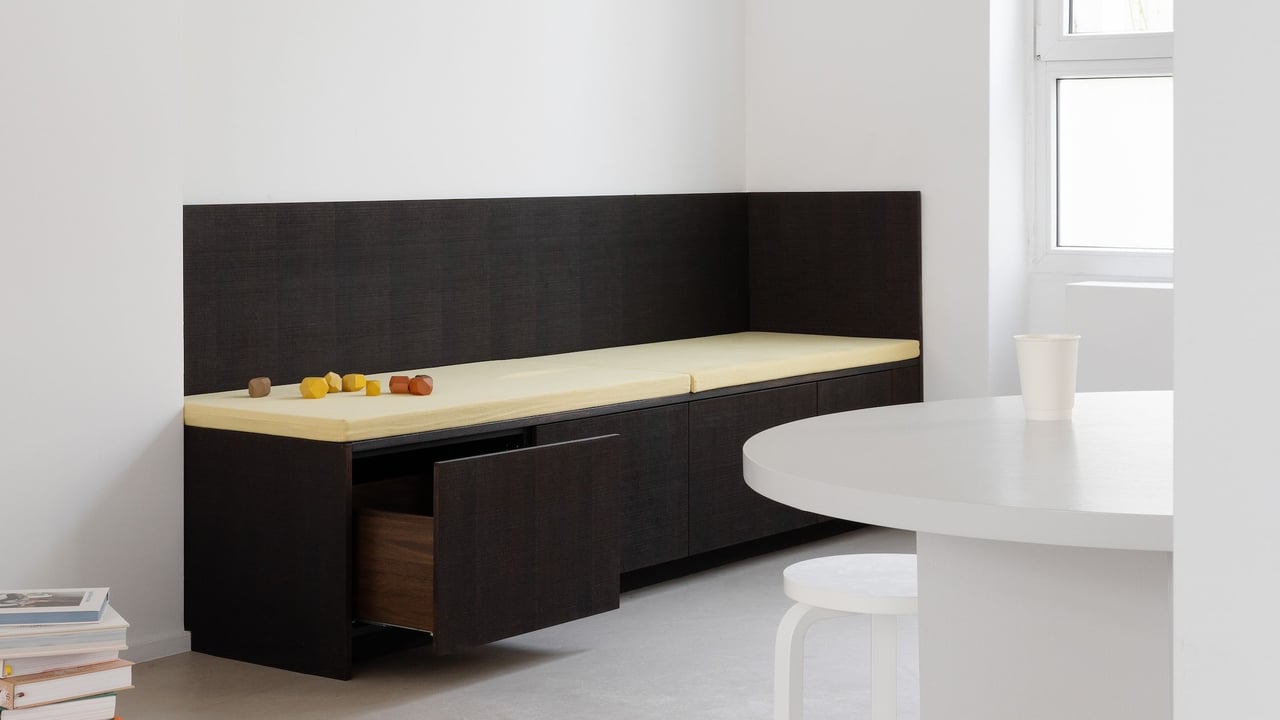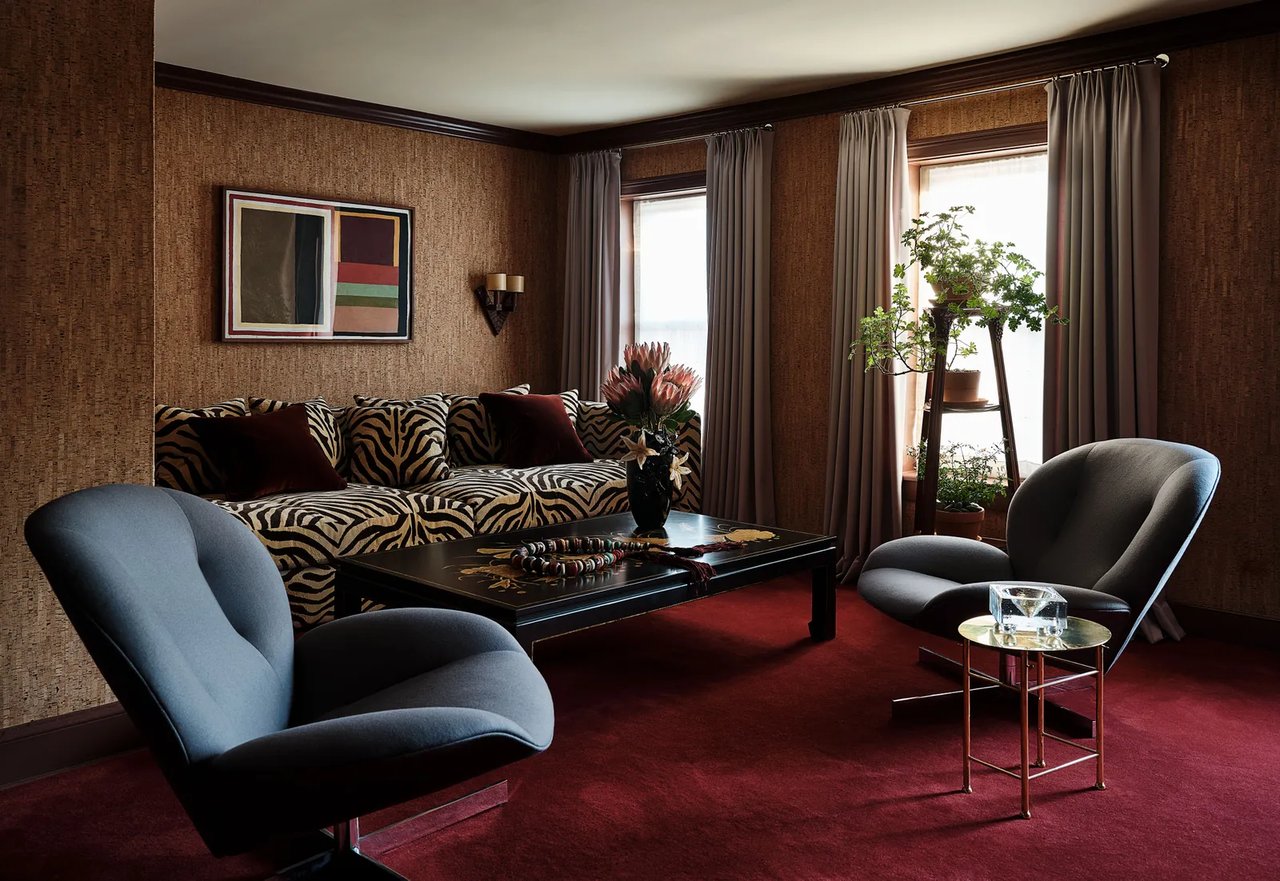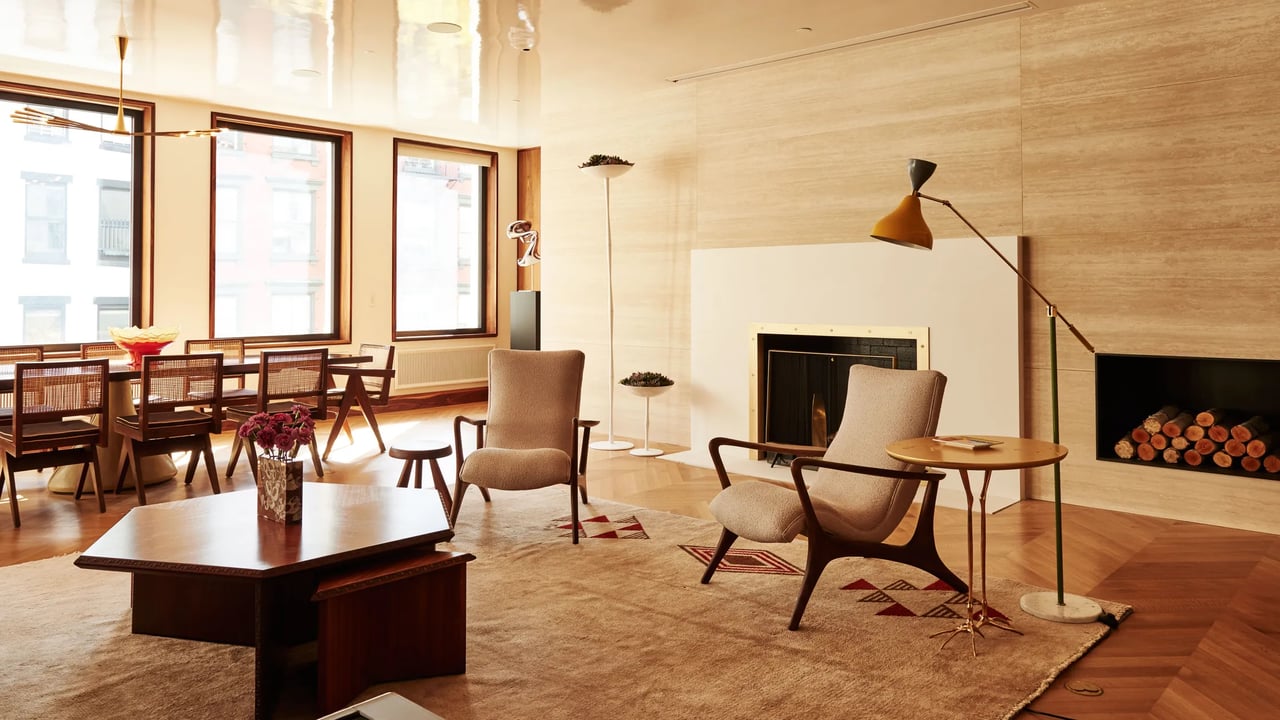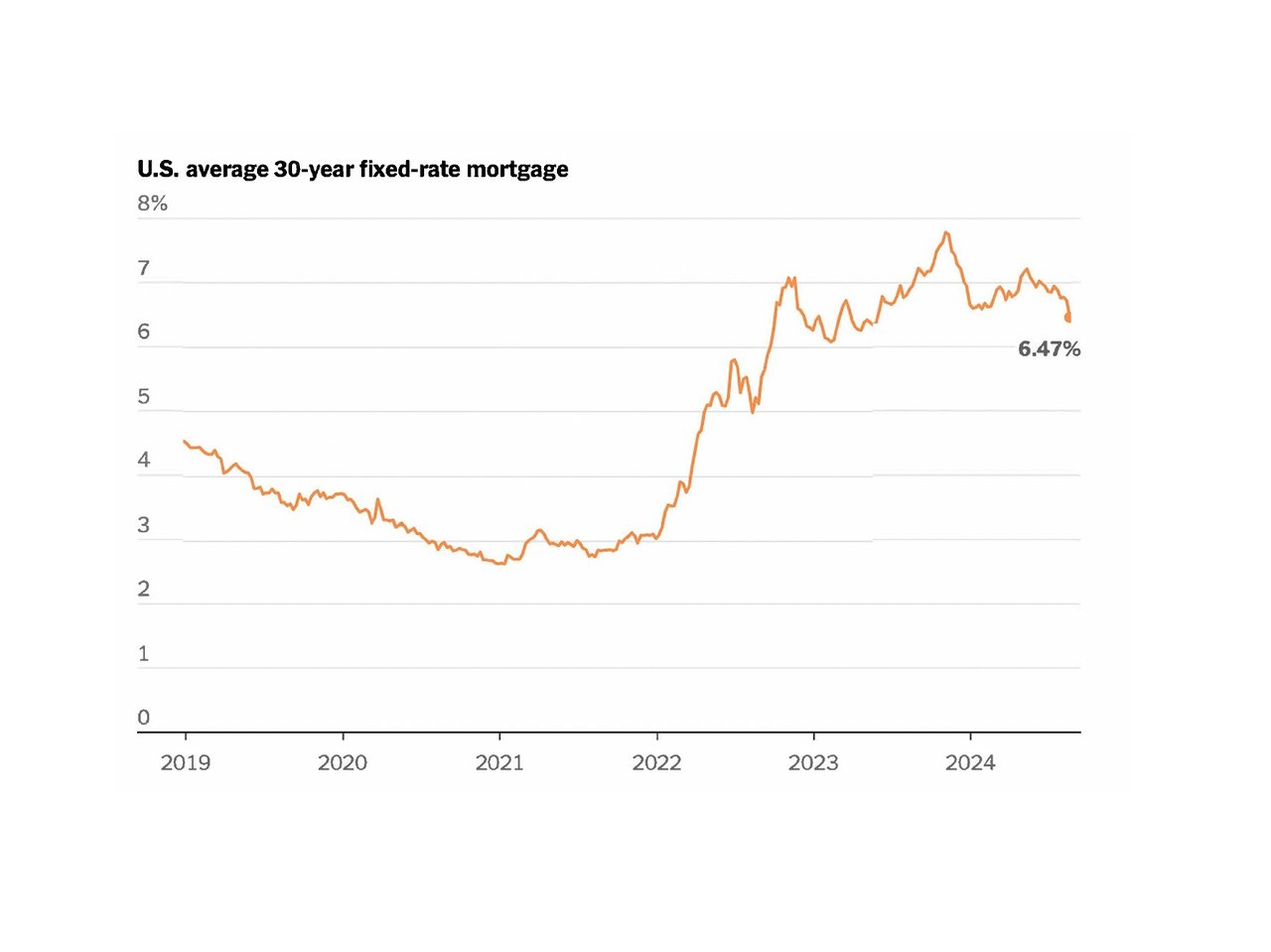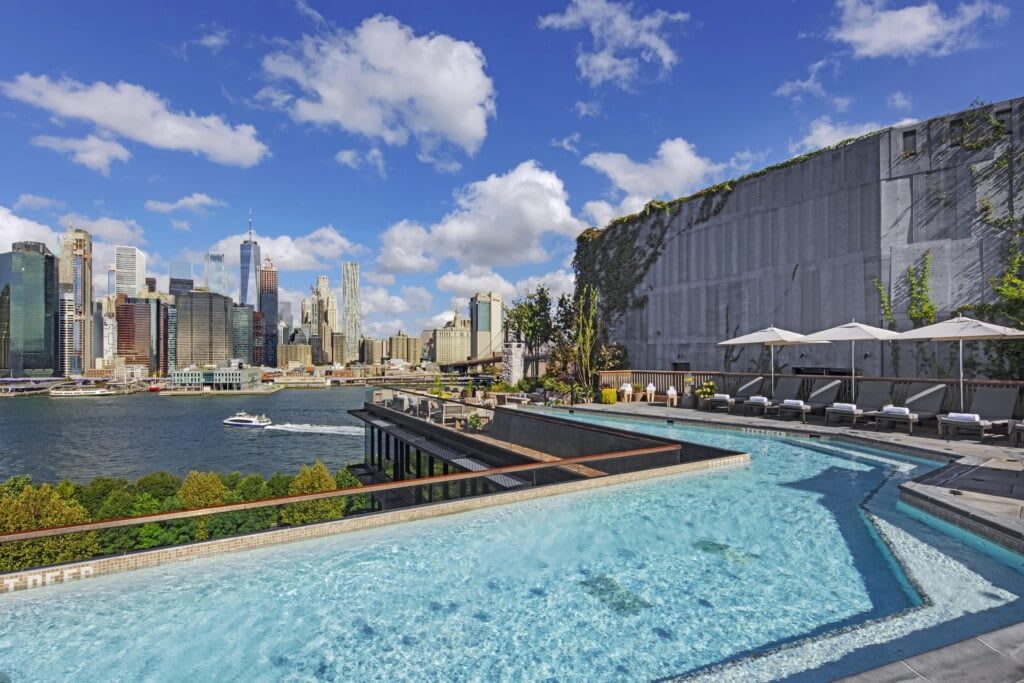Interior paint (which really mostly means paint for walls inside the the house) is one of those elements of a home improvement project that you notice less the better it is. But the choices can seem daunting: matte, satin, or eggshell? Acrylic or oil-based? Should you be priming or not? Don’t fret! The good news is that the best paints are simply the ones that satisfy the homeowners' unique aesthetics—so, in that sense, if you’re happy with it, it’s impossible for you to be wrong. But we can guide you toward the right paints for most modern homes. Indoor paints don’t need to be scary!
What’s the difference between interior paint and outdoor paint?
Don’t think you can just pull out that old leftover can of exterior paint to add a splash of color to the kids’ room. Exterior Paint is made with chemicals to prevent mildew, chipping, peeling, fading, and stand up to the rigors of outdoor weather—and these aren’t the kinds of things you want inside your home.
Paint bases you can buy: Acrylic versus latex versus oil
Though the term is used interchangeably with oil-based paints for most practical purposes, alkyd paints are actually not oil-based but alkyd resins mixed in some sort of thinner. When most people refer to “oil-based” paints, they’re actually talking about alkyds. They take longer to dry but tend to paint more evenly and blend better.
Though alkyds are a popular choice for outdoor painting because of their consistently high performance, they’re a poor choice for interior walls because they give off fumes during and after painting (sometimes for years). Those fumes can contain volatile organic compounds, or VOCs, that are harmful to humans and animals and include known carcinogens. If you’re considering alkyd paints for the interior of your home, it’s advisable for you to consider not going the DIY route and at least consult with, or hire, professional painters.
“Even in my commercial experience, we never used oil-based paints, ever,” North Carolina–based interior designer Heather LaBoda says. “Oil-based paints were used outside and to adhere to existing substrates in old buildings where you needed that adhesion and were covering an oil-based paint already there.”
Water-based paints come in two common varieties for painting the interior of your home: acrylic and latex. Acrylic paints have additives that make them more elastic and clingy and more mildew-and water-resistant, so they’re a popular choice for humid rooms like bathrooms. They dry faster than oil-based paints and can be cleaned with simple soap and water in most cases. Though they don’t contain as many VOCs as alkyd paints, they do contain more than latex paints and should be used with appropriate safety measures like wearing R95-rated respirators, opening windows, and running fans to blow the fumes out of the house. Acrylic is more expensive than latex paints and typically comes in one-gallon cans—you’ll probably see more acrylic paints in even smaller tubes and pots in art-supply stores than in the indoor aisles of paint stores.
Some manufacturers have recently introduced waterborne alkyd paints, which they say combine the best qualities of alkyd paints with the best qualities of acrylic paints, all with low VOCs.
Latex paints are far and away the most popular paints to use for interiors and are probably the type you’ll be painting with. Like acrylic paint, it’s a quick-drying (you can often finish two coats of paint in a single day), easily washable paint that’s much cheaper than the other common bases (sold in five-gallon buckets as opposed to one-gallon), with low VOCs emitted while drying. It’s great for covering large areas and comes in the most colors of any wall paint, but it can go on unevenly or let underlying paints show through if you’re not careful.
When you’re buying paints, look for low-, no-, or zero-VOC paints. Low-VOC paints are required to have less than 50 grams of VOCs per liter, whereas zero-VOC paints aren’t literally zero-VOC — they’re required to have under five grams of VOCs per liter. Though that’s a lot less than the paints previous generations had to choose from, they can still contain VOCs and other harmful chemicals, so it’s still good practice to wear the appropriate respirators and keep the area well-ventilated until the paint is completely dry.
Paint finishes you can buy: Matte/flat paint versus eggshell paint versus satin paint versus semi-gloss versus high-gloss
Just as important as the color of your paint is the finish (or gloss or sheen). Generally speaking, matte (or flat) paints absorb light and are better for covering up imperfections. The glossier the paint gets, the more light it reflects.
Though the terms gloss and sheen are often used interchangeably, gloss refers to the amount of light reflected at a 60-degree angle and describes a sharper, crisper look. Sheen, on the other hand, is the amount of light reflected at an 85-degree angle and describes a softer reflected appearance.
But don’t get too wrapped up in the exact names of the paint finishes, as there’s no industry standard and each manufacturer uses its own terms. You may notice that Sherwin-Williams’s eggshell is shinier than Benjamin Moore’s eggshell or even equivalent to Benjamin Moore’s semi-gloss, for example. Some manufacturers even use different names for gloss grades between their own paint lines! Suffice it to say that, in order of increasing glossiness, paints are generally understood to go from flat (or matte) to eggshell to satin to semi-gloss to glossy or high-gloss. In general, and in this article, we default to the terms most resembling the glossiness scale of Benjamin Moore.
Keep in mind that bases and pigments are mixed together to make the paint you walk out of the store with. So just because you don’t see your favorite color in an eggshell finish doesn’t mean you have to settle for semi-gloss—the store can simply mix the right color with the eggshell base, says Jennifer Levy, interior designer and founder of CAVdesigns in New York City
What is the most popular paint finish to buy for interior walls?
Eggshell paint is probably the most popular choice for interior paint, especially for lived-in areas like living rooms and dining rooms, and is seen by many as a great compromise between the easy maintenance of glossy paints and the ability to cover up imperfections of matte paints. (Some manufacturers have recently started putting out matte or flat paints that they tout as being as easy to wash as eggshell paints.)
One of the disadvantages of eggshell, however, is that it’s more difficult to touch up later compared to matte. “So if you don’t paint the whole wall, you get splotches where you touched up that you can see when the light hits the wall just right,” LaBoda says.
For millwork, like trim for windows and doors or features that see a lot of use like kitchen cabinets, semi-gloss finish is traditional, as it’s easier to clean for these areas that are often painted white and naturally attract more fingerprints.
For high-traffic areas, rooms that will get messy (kitchens and anywhere with young kids), and areas where humidity will be an issue, go toward the glossier end of the spectrum. Just keep in mind that the glossier you get, the more any imperfections in the wall will stand out. “In order to use a full-on gloss paint, the condition of whatever you’re using it on has to be really pristine, because it’s going to show any little flaws or defects or inconsistencies,” Levy says.
What is the best paint color to buy for interiors?
The classic combination is neutral tones for indoor walls and a lighter neutral color (usually white) for the trim, but, in the end, the only experts who count when deciding on the colors of the paint for the walls of your home are you and your family. (And there are plenty of underrated paint colors.) But we can point you in the right direction.
It doesn’t stop there. You also need to consider what’s outside the windows and how it affects the light. For example, Levy says, if you have a tree outside the window, the color from the leaves will suffuse the room with greenish light at certain times of day, pulling the paints on the walls toward the greenish end of the color wheel and influencing the paint sheen you choose.
How big is the room?
In general, darker colors make spaces look smaller, while lighter colors make spaces look bigger.
“A dark color will make a room feel smaller,” LaBoda says. “Paints with higher sheens will encourage natural lights to bounce around the space and make it feel larger. Matte finishes will absorb light and make a room feel smaller.”
There are instances when you may actually want to use darker colors in small rooms, for instance, to use ceiling paint to good effect.
“Smaller rooms where you don’t spend a lot of time, like a powder room, can really be enhanced by a rich coat of paint,” Levy says. “The fifth wall is the ceiling—I’ve used light pastels or even darker, richer colors on the ceiling to add a lot of atmosphere, and it can really bring a high ceiling down. Sometimes a really high ceiling can feel too high, not to human scale—a small bathroom with a nine-foot, 10-foot ceiling can feel like a pit or a corridor—so dark paint can make it feel cozier.”
What do you use the room for?
The function of the room you’re painting will be a huge factor in the finish you choose—and could affect your color choice, as well.
High-traffic areas and areas that see a lot of messes, splatters, handprints, and sticky little fingers—kitchens, family rooms, living rooms, laundry rooms, bathrooms, and anywhere little kids like to congregate—will require different paint finishes than rooms that are more sedate. (Think semi-gloss paints and above on the stain-resistance scale.)
You’ll also want to consider whether the colors you pick match the activities the room will support.
“Is it used to work, play, or relax? Because colors can have a direct effect on how you feel,” LaBoda says. “Blues and grays and greens are calming. Yellow is energetic. Red is intense and passionate. How would that color reflect how you feel as you use it? What mood do you want to set aesthetically? Classy? Funky? Playful?”
What paint is best to buy for trim and architectural details?
Crown molding, wainscoting, cornices, balustrades, custom wall panels, and other architectural details are usually painted a different color and finish than standard walls. They’re typically painted white or some other color that complements the wall paint, which is a safe choice if you don’t want these features to be accentuated because of flaws you don’t want to highlight or because you just feel like it.
There’s often a good reason to go with a glossier texture like a satin finish for these—for instance, railings and wainscoting are common areas for scuffs and fingerprints. Elements like crown molding and cornices won’t see a lot of handprints, of course, but a glossier paint is a good way to bring attention to these attractive elements, catching and reflecting light and using it to pop and emphasize its three-dimensionality, as long as it isn’t so glossy that it is showing off the imperfections, of course.
And if you do want to showcase your architectural details, painting them is a perfect way to do that too. “Working in Brooklyn, I do deal with a lot of architectural detailing in brownstones, and one thing people get really hung up on is wood,” Levy says. “So I convince people that it’s an opportunity to highlight the details in a different way — it doesn’t have to be a wood color.”
Matching indoor paints to furniture, curtains, and other elements
Once you’ve considered the size and function of the room, there are several other elements you should look at before settling on the colors for your indoor painting. Do you know what furniture, drapes, or other items are going into the room, or is it already furnished? Picking out and emphasizing or complementing existing color schemes is a great way to ensure you get the most out of your indoor paints—and seriously narrow down the paint chips you’ll be looking at.
“Usually, I like to select the paint pretty late,” Levy says. “I like to have the room and furniture and fabrics figured out and then paint. Why? Because if you look at a paint deck, there’s like thousands of paint colors to pick from.”
“Do you want to pick from elements like duvet covers? Are there multiple colors in them?” LaBoda says. “You can pull from some of those and match those to paint swatches from the store and build off that. It’s nice to have a central element to build off of.”
Try paint samples before you buy
The most important step in choosing your paint colors is getting samples and making sure they work in your space with all different kinds of lights and your existing aesthetic. You can get paint decks or paint chips for paints for sale at almost any paint store, but the chips are tiny—about the size of a thumbprint—and won’t do you much good. Instead, stores often offer tiny cans of paint for sale that you can use to paint small patches of wall in the colors you’re considering—the idea being that you can simply paint them over once you find The One.
“The best thing to do is paint a 12-by-12 swatch on the wall with all your options,” LaBoda says. “Looking at it on the wall at home is better, and the bigger the swatch the better—it’s almost more concentrated. I would encourage people to keep it there for multiple days and look at it multiple times of day. You’ll see how it changes depending on the natural light in the night and morning.”
If you’re antsy about actually painting a wall you may change your mind about, then Levy suggests companies that offer large peel-and-stick paint samples, like Backdrop and Samplize, which offer samples of paint from major paint suppliers like Benjamin Moore, Sherwin-Williams, and Farrow & Ball.
Prep and primers to buy for paint jobs
Indoor paint jobs start way before the actual painting: You need to wash and clean the walls and make sure the surface is ready for the paint to adhere to it. It might require some light sanding. And if it’s going over a glossy paint, a much darker paint, or a troublesome surface, then you should look into a primer that’s suited to the surface you’re working on (drywall, wood, metal, etc.)—especially if you’re dealing with water stains.
“Somehow, those stains always come through,” Levy says, chuckling. “If there’s a real trouble spot, I like Zinsser 1-2-3. It’s pretty tough stuff, a primer, sealer, and stain killer in one, and it’s water-based and can be used on a lot of different surfaces.”
How many gallons of paint do I need to buy?
The rule of thumb is that you need one gallon for one coat of 400 square feet covered. (That’s the area of the walls you’re painting, not the floor space of the room.)
Once you’re done, keep unused paint in a tightly sealed can in the basement or a closet for touch-ups. Levy lays Saran Wrap on top of the paint before sealing the lid on half-used cans so it doesn’t dry out or develop a skin (like you would with half an avocado). If you actually manage to use exactly as much indoor paint as you bought, then it’s not a bad idea to buy an extra quart in the colors you used and keep them sealed in storage for the same reason. (You never know when the manufacturer might decide to discontinue the colors you used, after all, and though many paint stores have machines that can replicate colors for you, they’re not always a 100% perfect match.)
How many coats of paint do I need for indoor walls?
Both experts we spoke to agreed that you should paint at least two coats for a project, possibly more if the original color still shows through.
“Do a minimum of two and then look at it,” Levy says. “If it’s a darker paint, then maybe three. You’ll see it. You’ll see unevenness and maybe a bit of the color behind it here and there.”
How do you care for the indoor paints on your walls?
Indoor paints are made with durability in mind. Unlike with fabrics or furniture, you generally don’t have to worry about fading with indoor paints, according to Levy.
Most indoor-painted walls can be cleaned with a simple swipe of mild soap and water on a soft washcloth. You’ll only need to start thinking about putting on a new coat if there are noticeable scuffs or more serious damage—or if your tastes change.
“I would say consider repainting every 10 to 15 years or so; you’ll start noticing, depending on the color, that your whites are getting dingier or that you may be getting sick of that color,” LaBoda says. “Though it depends on how much use the space gets. It might be sooner if you picked some bold colors that aren’t vibing with you anymore.”
What is the best interior paint brand to buy?
By far the most popular and easiest-to-find brands of indoor paints in the US are Sherwin-Williams and Benjamin Moore, and each of them have several lines in various tiers of quality and price. (Behr, a Home Depot exclusive, is also popular.) Levy recommends Farrow & Ball for its excellently curated selection of colors and high finish, though it can get notoriously expensive. LaBoda and Levy both say that those looking to coordinate wall paints with wallpaper should browse the Backdrop Home website, which offers a selection of wallpapers and coordinating paints.
Painting accessories to buy
Necessities for paint projects include paint brushes, rollers (of which you’ll need a shorter nap the smoother the surface), painter’s tape, drop cloth or plastic, paint respirators, and disposable gloves. You may even decide to rent a sprayer (in which case, you definitely need good respirators.) Levy says her favorite painter’s tape for sharp lines is FrogTape. Her go-to brush type is a three-inch angled brush.
“My recommendation is to get the best brush you can afford and clean it every time you use it and it’ll last you a long time,” she says.
How much does it cost to paint a room?
A paint project’s budget can vary widely, depending on whether you’re doing it yourself or hiring professional painters, the brand and quality of paint you use, the height of the walls and difficulty painting them, architectural details, and so on. The paint itself can range from as little as $20 a gallon for low-quality paint to around $150 for higher-end paint from Farrow & Ball.
Generally speaking, you’ll pay less per square foot for larger paint projects, since the price of some necessities (drop cloths, brushes, ladders, etc.) is essentially a flat price.
The best tips and biggest mistakes when buying interior paints
Paint samples, paint samples, paint samples. Never forget to do the paint samples before buying paint, both experts say.
“Not getting samples is the number one mistake people make with indoor paints,” Levy says. “People are constantly looking at Pinterest and other sources for finding paint colors they like, which is a good starting point. But the one thing I always tell people is: Get samples.”

